The Ultimate Tropical Fly Fishing Guide: Northern Australia Edition
Table of Contents
Introduction: Northern Australia’s remote tropics are arguably the world’s premier destination for saltwater fly fishing. This comprehensive guide is written by anglers for anglers – especially those seeking a high end adventure on the fringes of the fly fishing world. Far North Queensland and the Northern Territory offer an unmatched diversity of hard fighting species in pristine, low pressure waters. One seasoned explorer even called Cape York’s fishery “the most diverse place I have ever fished,” with many trophy species that “you can’t find anywhere else on the planet”. Here you can sight cast to tailing permit and the elusive Blue Bastard on turquoise flats, then turn around and tangle with rampaging giant trevally (GT) or pelagics busting bait on the reef edge. It’s a dream scenario for the expert fly fisher seeking the ultimate Aussie fly fishing experience. At FishingEarth, we pride ourselves on working with **Australia’s best guides and best fishing charter businesses**, ensuring you have access to the largest range of options for your adventure.
This guide will walk you through essential flies, gear, and packing for a five day expedition in these remote Australian waters. We’ll dive deep into why each fly pattern works (tying in local prey and fish behaviour), justify our gear choices for tropical conditions, and provide a packing checklist so you’re prepared for anything. All recommendations are based on extensive field experience – we have no commercial affiliations, and every fly, rod, or accessory we suggest is simply what we know works best. By the end, you’ll not only have a gear list, but also a richer understanding of this unique fishery and the technical nuances that make Northern Australia tropical fly fishing the pinnacle of the sport. For inquiries, please call us at +61418 777 772 or email fish@fishingearth.com
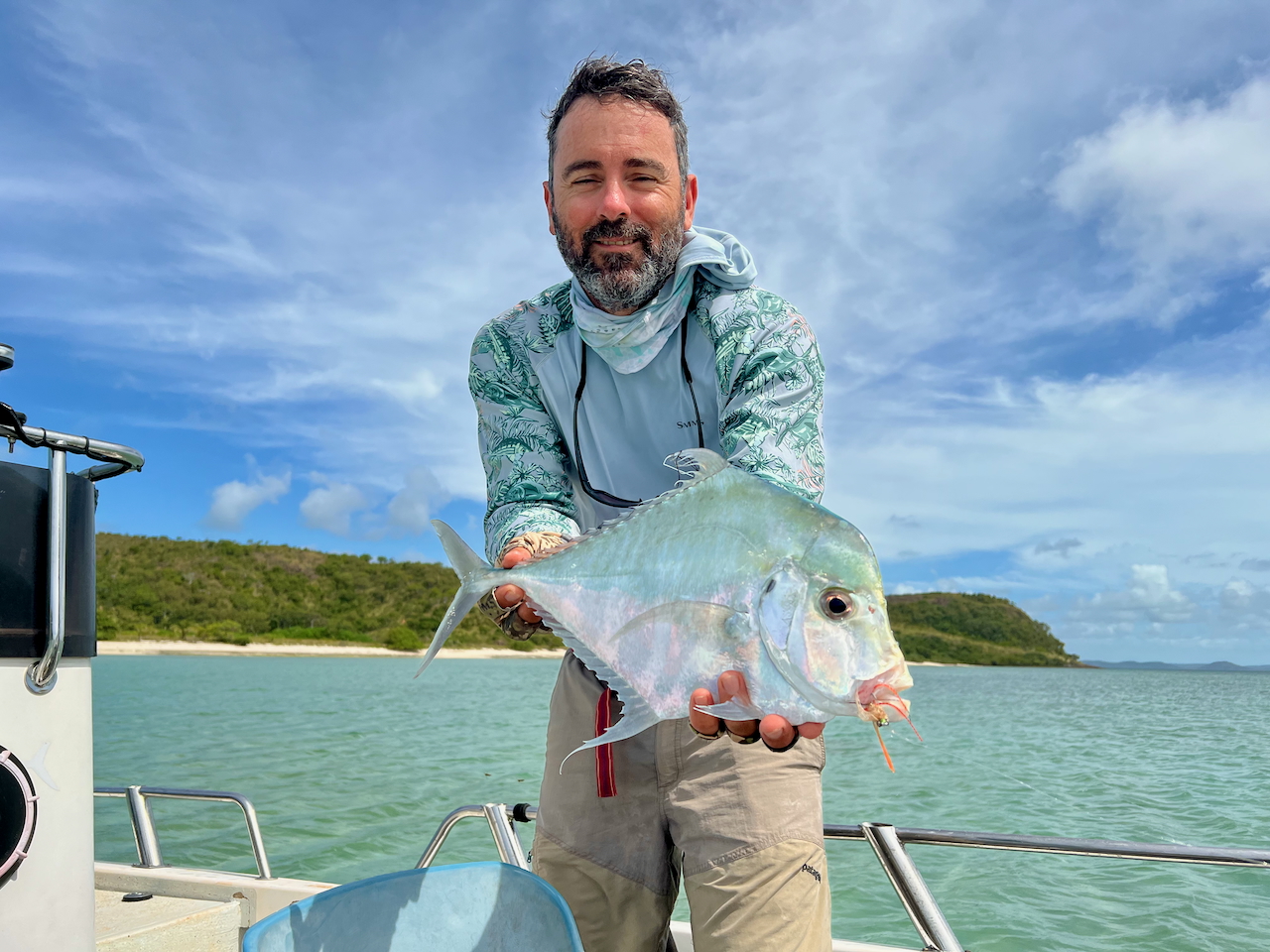
Flies You Need to Bring for Australian Saltwater Fly Fishing
When heading into remote, lightly fished areas for saltwater fly fishing Australia, it’s crucial to carry a diverse and abundant selection of flies to last the entire trip. The fish in these isolated waters are often eager and aggressive due to minimal pressure, which is great for action – but it also means they can quickly chew through your fly box! For five full days of fishing, plan to bring backups of every pattern. You’ll want multiple sizes and weights of each fly to cover different depths and scenarios. Below we break down the key fly categories – crabs, shrimp, baitfish, and poppers – highlighting specific patterns and why they excel for our target species in Northern Australia fly fishing. The team at FishingEarth has extensive experience with these conditions. For more information, email fish@fishingearth.com
Crab Patterns for Aussie Flats
Crabs are a staple food source on tropical flats, so realistic crab imitations are a must have for species like permit, Blue Bastards, and golden trevally. Two proven patterns top our list for Aussie fly fishing success:
- Alphlexo Crab: Developed by the Alphonse Fishing Company in the Seychelles, the Alphlexo (sometimes spelled “Al Flexo”) Crab has become legendary on flats worldwide. This fly is constructed from flexible mesh tubing that forms a lifelike crab body and shell. Most Alphlexos we use have a tan or sand coloured carapace with barred clear/white rubber legs for a natural translucent look – a colour combo that has proven deadly on Aussie flats. The pattern comes in different weights (e.g. lightly weighted vs. heavy “double tungsten” versions) to adjust sink rate for various depths. The design and materials make it incredibly effective: the mesh body lets it sink quickly (getting into the feeding zone fast), yet it lands softly and rides hook up, reducing spooking and snags. The rubber legs and subtle profile closely mimic real reef crabs scuttling along the bottom. Crucially, the Alphlexo is also durable – the body tubing stands up to many fish, which is key when you’re far from any fly shop. This pattern truly “changed the game” for Indo-Pacific permit, and we’ve found it just as indispensable in Australia. Target Species: The Alphlexo shines for permit, Blue Bastards, golden trevally, and even triggerfish – basically any flats fish that “loves to munch on crabs”. Permit and Blue Bastards often tail on shallow flats looking for crabs; the Alphlexo’s realism and quick dive trigger aggressive takes. Many experienced Aussie anglers won’t hit the flats without a box full of tan/yellow Alphlexos in sizes 2 up to 1/0.
- VGDC Crab (Voltzy’s Goldy Destroyer Crab): An Australian designed crab fly created by Geoff “Voltzy” Volter specifically for golden trevally, the VGDC has earned a cult following on our northern flats. Tied typically on stout 1/0–2/0 hooks, it features a tan coloured body with bright yellow legs (hence “Goldy Destroyer”) and often incorporates flowing hackle feathers as claws plus soft marabou or hen fibres as mouthparts for extra movement. Various dumbbell eye weights are used to fish different depths, from ankle deep flats to channels. Effectiveness: The VGDC’s profile and motion are deadly imitations of local reef crabs. On the pause, the marabou and rubber legs undulate like a crab’s natural defensive posture, tempting even finicky fish. Its weighting can be chosen so that it drops nose down into the sand just like a fleeing crab. Geoff Volter originally designed this pattern around Weipa and Cape York flats, so it’s dialled in for the crabs those fish eat. Target Species: As the name suggests, it was made for golden trevally – and it definitely excels there – but it’s equally effective on other crab craving species like Blue Bastards (which often prefer a stationary crab they can tail on) and smaller Indo-Pacific permit. In our experience, a Blue Bastard that refuses a moving fly will pounce on a well presented VGDC left still on the bottom. Always carry a mix of lightly weighted and heavier VGDCs to adjust to water depth and current for your Northern Australia fly fishing adventure.
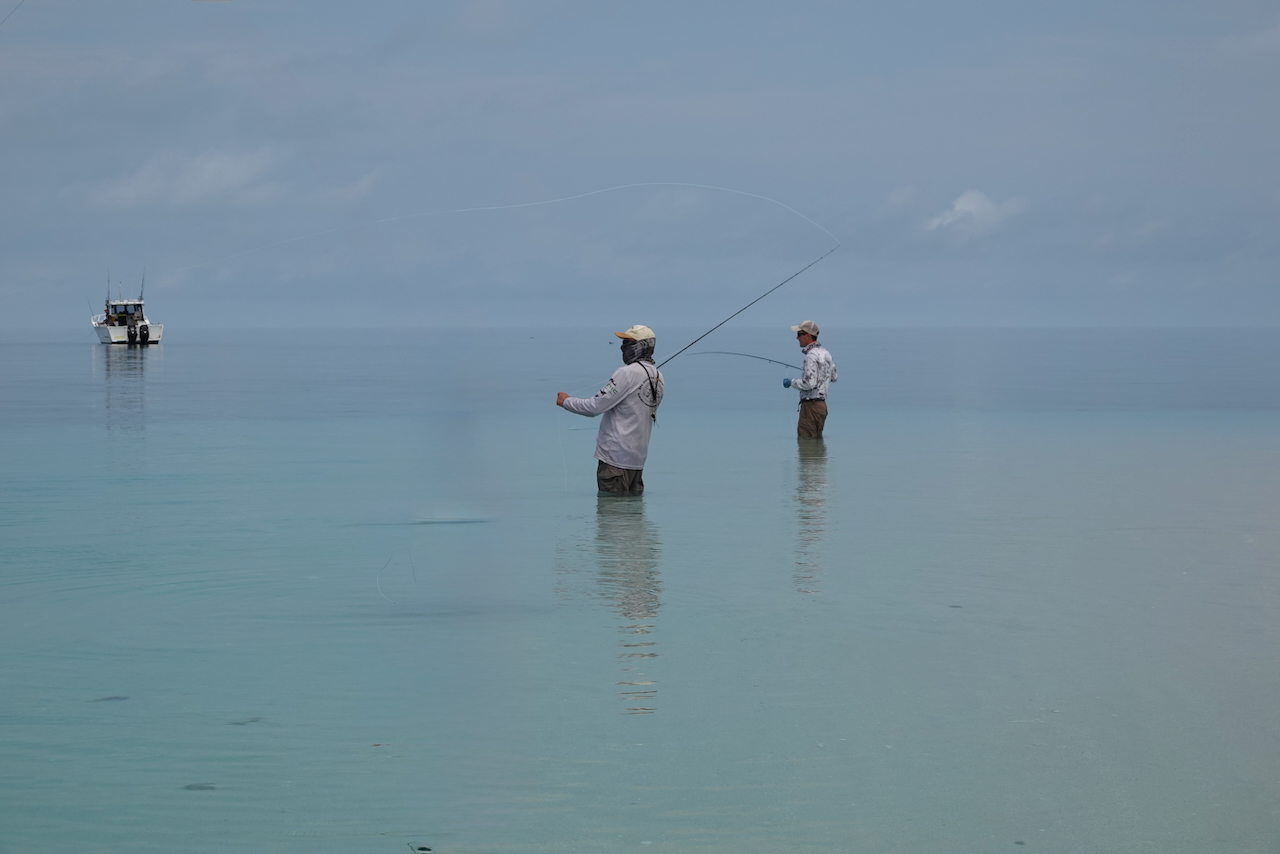
Shrimp Patterns for Tropical Fly Fishing
Shrimp are another primary food source in tropical saltwater, from shallow flats to reef edges. Many of the species we target – permit, bastards, trevally, triggerfish, emperor snapper, etc. – eagerly snatch up shrimp. We recommend packing a variety of shrimp flies in sizes ~#1/0 down to #2, covering different sink rates (some with bead chain eyes for skinny water, some with heavier lead eyes for deeper or faster drifts). For inquiries, please call us at +61418 777 772 or email fish@fishingearth.com
Design & Materials: The best tropical shrimp flies use durable synthetics and resins to withstand dozens of strikes. Common patterns feature bodies of Super Hair or EP Fibres moulded with epoxy or UV resin to simulate the translucent shell of a shrimp. Many incorporate mono or plastic shrimp eyes, antennae, and rubber legs for realism. For example, popular patterns might imitate mantis shrimp (the burrowing kind with claw like appendages) or cleaner shrimp (the small translucent types on reefs). Tan, olive, or brown are go to colours to match local prawns, and a bit of flash or orange yarn can suggest egg sacs or a shrimp’s natural colour accents.
Effectiveness: A well tied shrimp fly will “swim” when stripped and also glide and sink realistically when left to drop – just like a fleeing or drifting shrimp. This versatility is key because different fish react to different presentations. Aggressive feeders like trevally may chase a fast stripped shrimp, whereas wary permit often prefer seeing it sink and sit briefly on the bottom (as they tail up to inspect it). The synthetic fibres and epoxy make these flies hardy; they won’t get waterlogged or torn easily, so you can land multiple fish per fly. The epoxy also adds a bit of shine and a smooth texture that mimics the exoskeleton of a prawn.
Target Species: We have found shrimp patterns to be deadly on permit, Blue Bastards, golden trevally, and triggerfish in particular. In fact, on days when permit ignore everything else, a small tan shrimp fly delicately presented can be the ticket. Blue Bastards also eat shrimp flies readily – sometimes even better than crabs – especially if you let the fly sit still on the sand where they’re rooting around. Triggers (if you encounter species like titan or yellowmargin triggerfish on coral flats) are infamous for loving shrimp flies – the Alphlexo was originally developed for triggers, after all. Weighted shrimp flies are useful for reef dwellers too: species like emperors, snapper, or tuskfish will pounce on a shrimp imitation bounced near bommies. The key is to have a range from lightly weighted (for shallow flats and slow sink) to heavy eyes (to drop into 6 8 feet of water or punch through current).
Pro Tip: Black spot tuskfish (“tuskies”), an Aussie flats prize not found many other places, often require a shrimp fly. These electric blue wrasse feed by crunching crustaceans. They can be finicky – guides call them the “tractor of the flats” for their stubborn bulldog fight and tendency to hole up in coral. We’ve found that if a tuskfish refuses a crab fly, a shrimp pattern cast close and allowed to sink will get inhaled. Just be ready: once hooked, a tusky will tear off for cover, so hit the brakes hard!
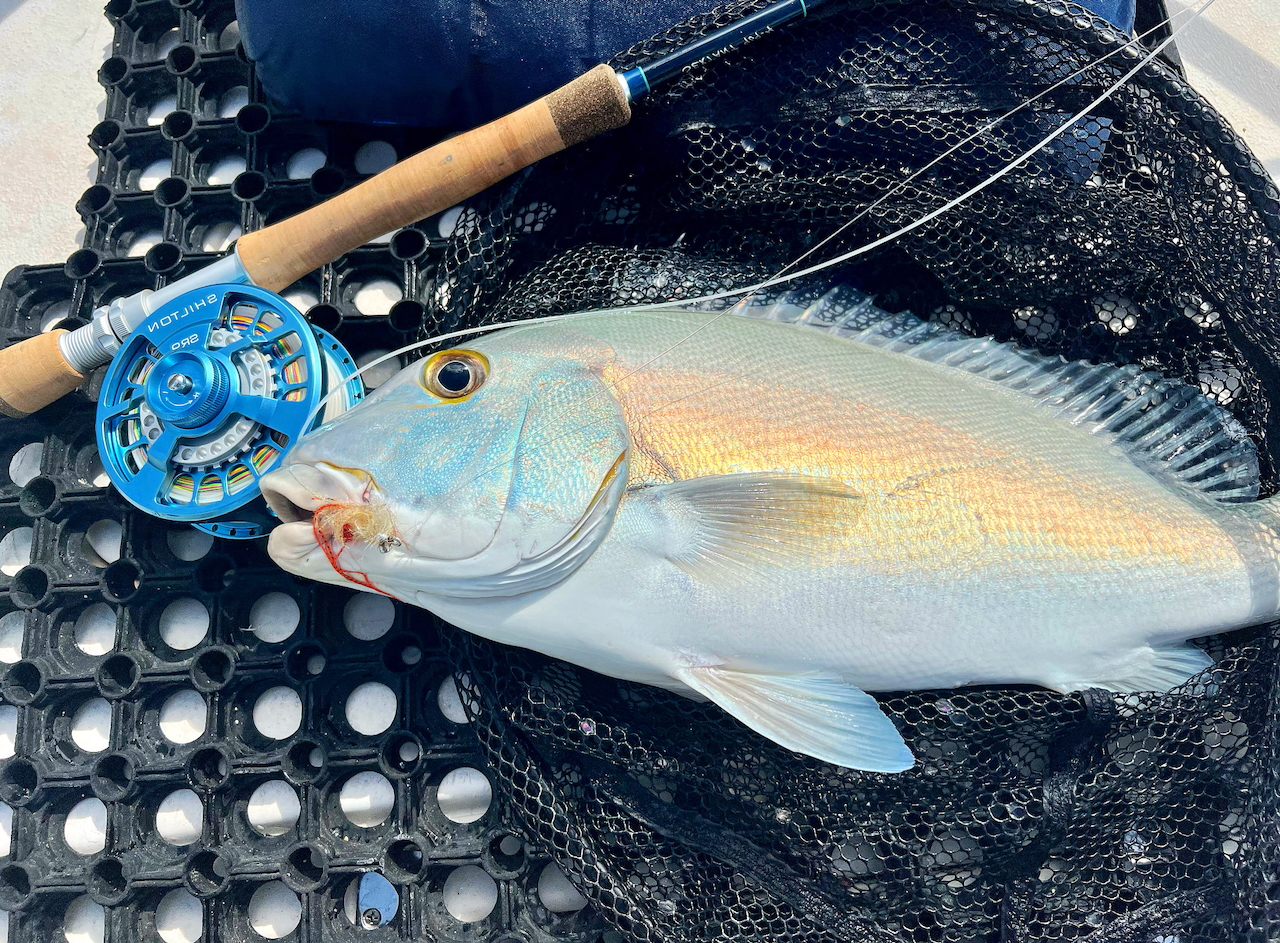
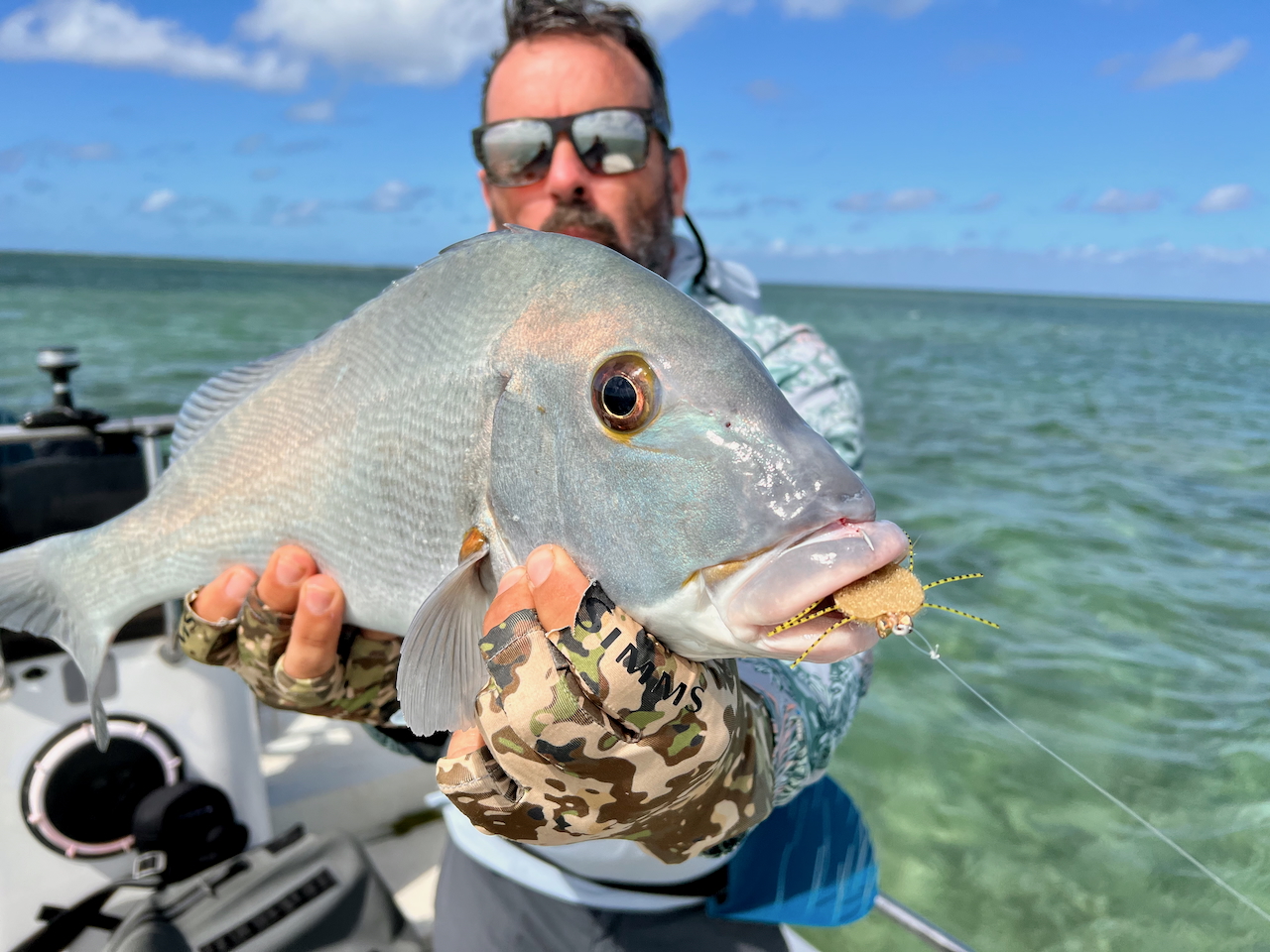
Baitfish Imitations (Streamers) for Australian Fly Fishing
Not all fish on this trip feed on the bottom – many of the heavy hitters chase baitfish in the water column or on the surface. Baitfish streamers should make up a significant part of your arsenal for targeting giant trevally, queenfish, mackerel, tuna, and various reef predators. We recommend packing both slim, fast sinking streamers and larger profiled “big meal” flies for your Australian fly fishing adventure. Our team at FishingEarth can connect you with the best charter businesses for these species. For more information, call +61418 777 772 or email fish@fishingearth.com
- Clouser Minnows: The Clouser Deep Minnow is a timeless pattern that you’ll find in nearly every saltwater angler’s fly box, and for good reason. Invented by Bob Clouser in the 1980s, it imitates small baitfish exceptionally well. A Clouser is tied with prominent dumbbell eyes at the head, which serve two purposes: (1) they flip the hook point up, letting the fly ride hook up to avoid snagging the bottom, and (2) they give the fly a jigging motion on the retrieve. In the water, a Clouser darts and then sinks nose first like an injured minnow – an action many predators find irresistible. We tie/bring Clousers up to size 4/0 on stout hooks for this trip, using natural colour schemes like olive/white or tan/white to mimic reef baitfish, as well as high contrast versions (e.g. chartreuse/white with flash) for maximum visibility. Effectiveness: Simplicity is the Clouser’s strength. Its slim profile closely resembles common baitfish (like hardyheads, anchovies or mullet juveniles), and the large painted eyes on the dumbbells act as a focal point for predators to key on. It has caught more types of fish than perhaps any other fly – everything from bonefish and trevally to trout will eat a Clouser. Target Species: On our tropical trip, Clousers are killers for mid sized GTs, queenfish, trevally species, and reef dwellers like coral trout or snappers. When pelagic species like mackerel or tuna are blitzing bait, a fast stripped Clouser dropped below the fray often gets nailed. Because Clousers sink fast, they’re also useful if fish are holding deeper or if you want to dredge a channel between flats.
- Brush Flies (Large Baitfish Patterns): When targeting the true bruisers – giant trevally, big queenies, GT sized coral trout, etc. – you’ll want some larger profile streamers that push water and draw attention. Brush flies refer to big streamers tied using composite “brush” materials (often synthetic fibres on a wire brush or dubbing loop) to create a wide profile, translucent body with lots of volume. Think of patterns like EP baitfish, Game Changer variations, or Blane Chocklett’s “Beast” flies – but in our case, scaled up to 4/0, 6/0, even 8/0 hooks. These flies can be 6–10 inches long and are usually tied with a wide head or multiple collars of material to make them bulky. We also include flashy elements (e.g. holographic flashabou or lateral scale) in these flies for maximum visibility. Effectiveness: Big predators often prefer a big meal. A brush fly presents a pulsing, lifelike silhouette of a larger baitfish such as a mullet, garfish, or pilchard – the kind of prey a 50+ lb GT or a big Spanish mackerel would smash. The bulk of the fly pushes water, helping fish locate it in the surf or choppy conditions, and many brush flies create a subtle disturbance akin to a fleeing baitfish. Flashy fibres in the fly catch light, acting like fish scales to attract attention from afar. Despite their size, well tied brush flies don’t cast as horribly as one might think – modern synthetic materials don’t soak up water, so the flies stay relatively light. Target Species: We break out the 6/0–8/0 brush flies mainly for giant trevally (GTs) and large pelagics. The biggest GTs in places like the Great Barrier Reef or Wessel Islands are apex predators; they’ll readily hunt reef fish and even juvenile trevally or queenfish. In fact, GT experts often use patterns that provoke reaction strikes by being big and bold – patterns like large brush flies, or the infamous Airhead and GT Bunny. Similarly, if you find schools of tuna or big queenfish, a larger baitfish fly can single out the bigger specimens in the group. Even reef species like giant grouper or Napoleon wrasse (if you’re lucky enough to encounter them) have been known to eat huge streamers. Our rule: have a few flies that look too big – because in this fishery, they’re not! As one GT fly fishing angler noted, these flies are “designed to be visible and provocative, often incorporating flash materials to attract attention”. Carry them in tan/white, chartreuse, black, and other high contrast colours for different light conditions.
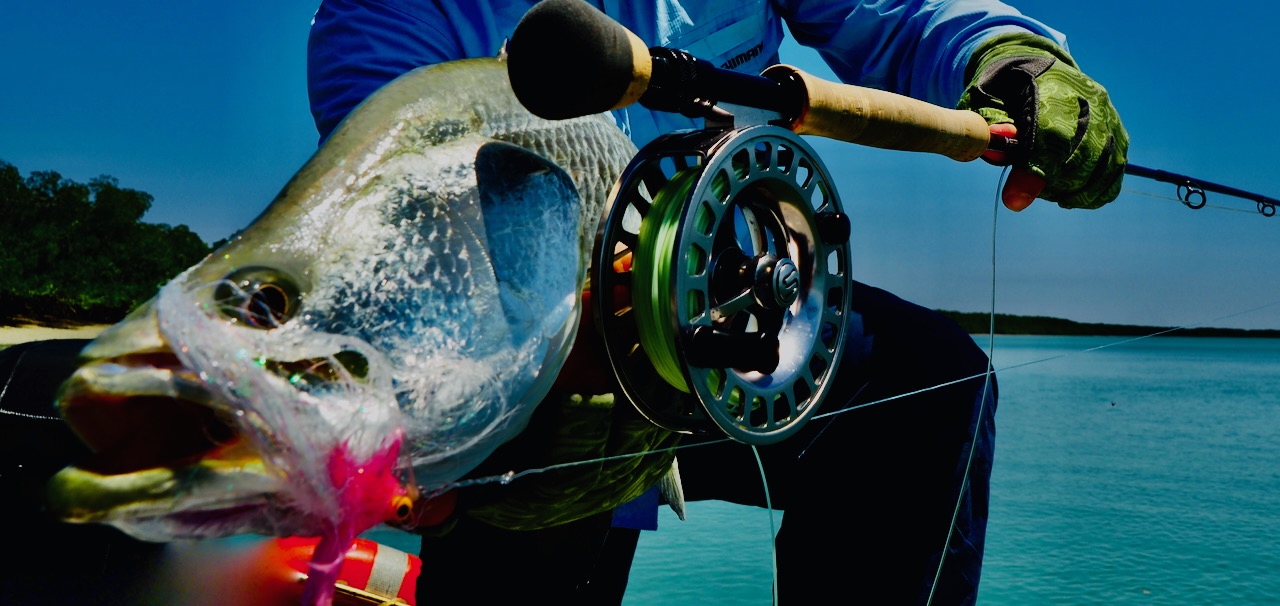
Surface Flies (Poppers) for Northern Australia
There are few thrills greater in fly fishing than a surface explosion strike. In tropical saltwater, that means using poppers and foam flies to entice GTs, queenfish, tuna, and reef species to smash on top. We strongly recommend bringing a selection of large, durable popper flies – especially two patterns that have proven themselves around the world for Northern Australia fly fishing. The expert guides we work with through FishingEarth often rely on these patterns. For inquiries, please call us at +61418 777 772 or email fish@fishingearth.com
- NYAP (Not Your Average Popper): The NYAP is a legendary GT popper pattern originally developed by guide James Christmas in the Seychelles. True to its name, it’s not a typical hard bodied popper. The NYAP is basically a minimalist foam cylinder head (often cut from high density EVA foam) attached to a short shank 4/0–8/0 hook like the Gamakatsu SL12S. It has an angled or cupped face that throws water, and a simple tail of bucktail or synthetic hair for a teasy, undulating follow up. The genius of the NYAP is its simplicity – no epoxy, no fancy paint, just a chunk of relatively soft, high buoyancy foam that won’t waterlog or crack. This pattern has accounted for some absolutely whopping GTs around the world, including in Australia. Effectiveness: The NYAP creates a loud pop and splash when stripped hard, imitating a distressed baitfish or even a small fleeing bird (GTs have been known to eat birds!). It pushes a lot of water, which in turn creates noise and a bubble trail that draws fish in from a distance. One big advantage of the NYAP’s foam construction is durability – one good hit from a GT can destroy lesser poppers, but the NYAP’s dense yet slightly soft foam tends to absorb the impact without shattering. (That said, GT teeth will rip the foam eventually, so bring a handful – you’ll often need a fresh one after a few fish or even one really ferocious take.) We rig them on top notch hooks (like SL12S or similar) so you don’t straighten out on a fish of a lifetime. Target Species: Giant Trevally are target #1 with the NYAP – it’s a must have in your GT fly fishing box. In Northern Australia, GTs patrol reef drop offs and bomboras; throwing a NYAP over shallow reef edges and stripping fast can incite violent strikes. Big queenfish also love poppers – they will cartwheel over a NYAP. We’ve seen reef red bass (snapper) and even small sailfish hit this fly. Essentially any aggressive predatory fish that will hit the surface could eat a NYAP, including mackerel (though their teeth often cut the leader). We prefer black or dark coloured NYAPs for high sun conditions (silhouette is easier for fish to see) and sometimes white/bright for low light, but colour is secondary to the commotion it creates.
- Double Barrel Popper: Another excellent popper style is the Double Barrel, named after the twin concave chambers in its face. These flies use a foam head (Flymen Fishing Co. makes the “Surface Seducer Double Barrel” heads) that has two deep cup faces – one on top and one on bottom – which create extra loud pops and a spitting action. The foam is high quality closed cell EVA, which means it’s extremely durable and won’t absorb water like old school cork or balsa poppers. We tie Double Barrels on hooks up to 6/0, often with a tail of saddle hackles or synthetic streamer material and some flash. Effectiveness: The dual cup design of the Double Barrel throws a bubble stream and “smoke” trail of disturbed water behind it. It’s a bit like a chugger and slider in one – it pops loudly if stripped sharply, but it also will wiggle and push water even on a steadier pull. This replicates an injured baitfish flailing on the surface, which gamefish find irresistible. The foam heads are also resilient: they “say goodbye to fragile poppers” by being almost indestructible under normal use. (As with the NYAP, a big GT’s jaws can still crush them eventually, but they hold up better than rigid epoxy coatings which can crack.) Target Species: We use Double Barrel poppers for the same surface feeding line up: GTs, queenfish, coral trout, red bass, Spanish mackerel, even trevally species like bluefin or golden trevally will hit a popper when they’re in the mood. Some of the reef shallows around Lizard Island and the northern Great Barrier Reef have packs of GTs and red bass that will explode on a surface fly – it’s something you have to experience to believe. Having a mix of NYAPs and Double Barrels lets you experiment: sometimes fish show a preference for one style of pop and movement. On flat calm days, a gentler “bloop” from a smaller Double Barrel might entice spooky fish, whereas in choppy water a NYAP ripped fast might be needed to get their attention.
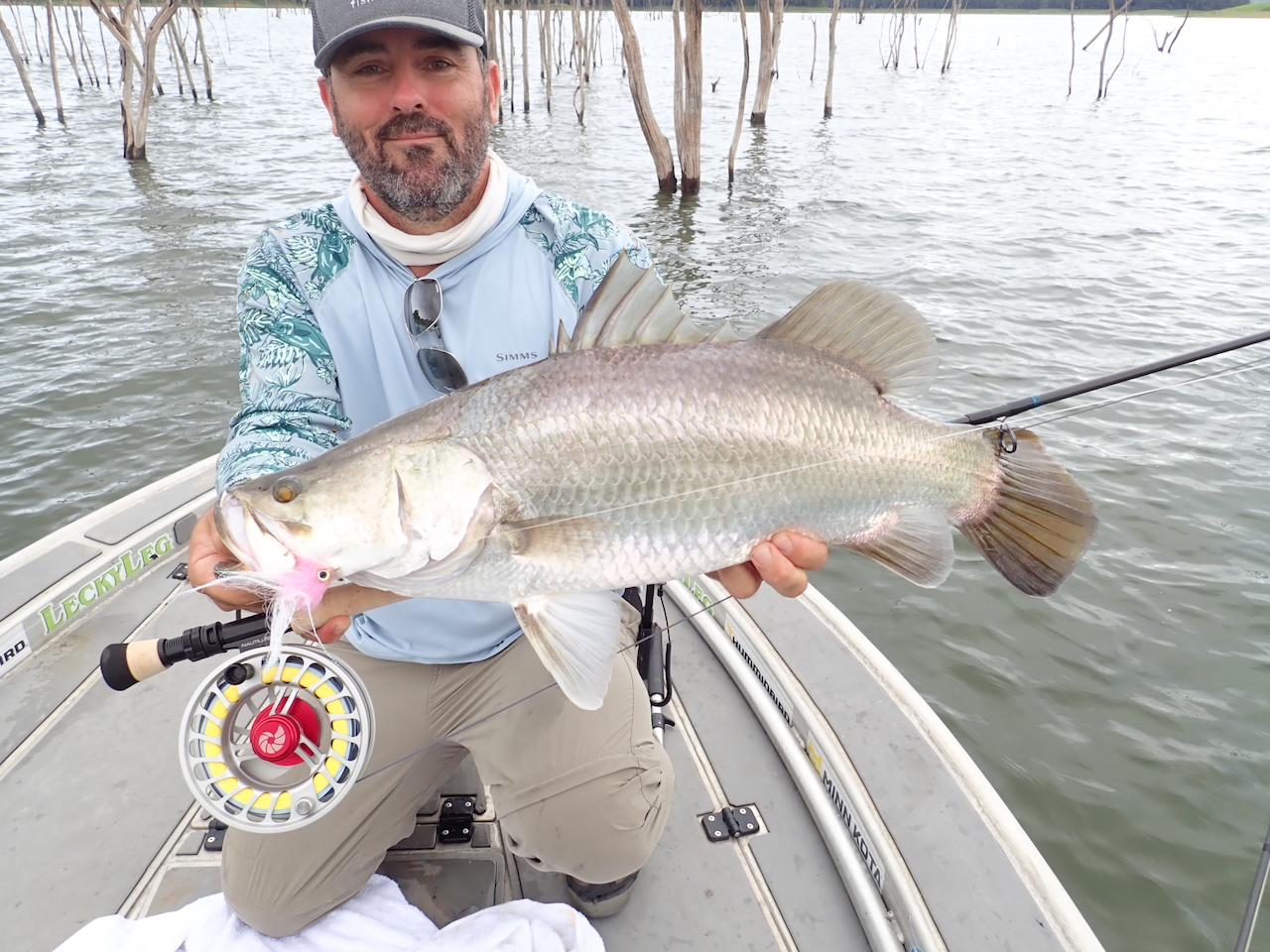
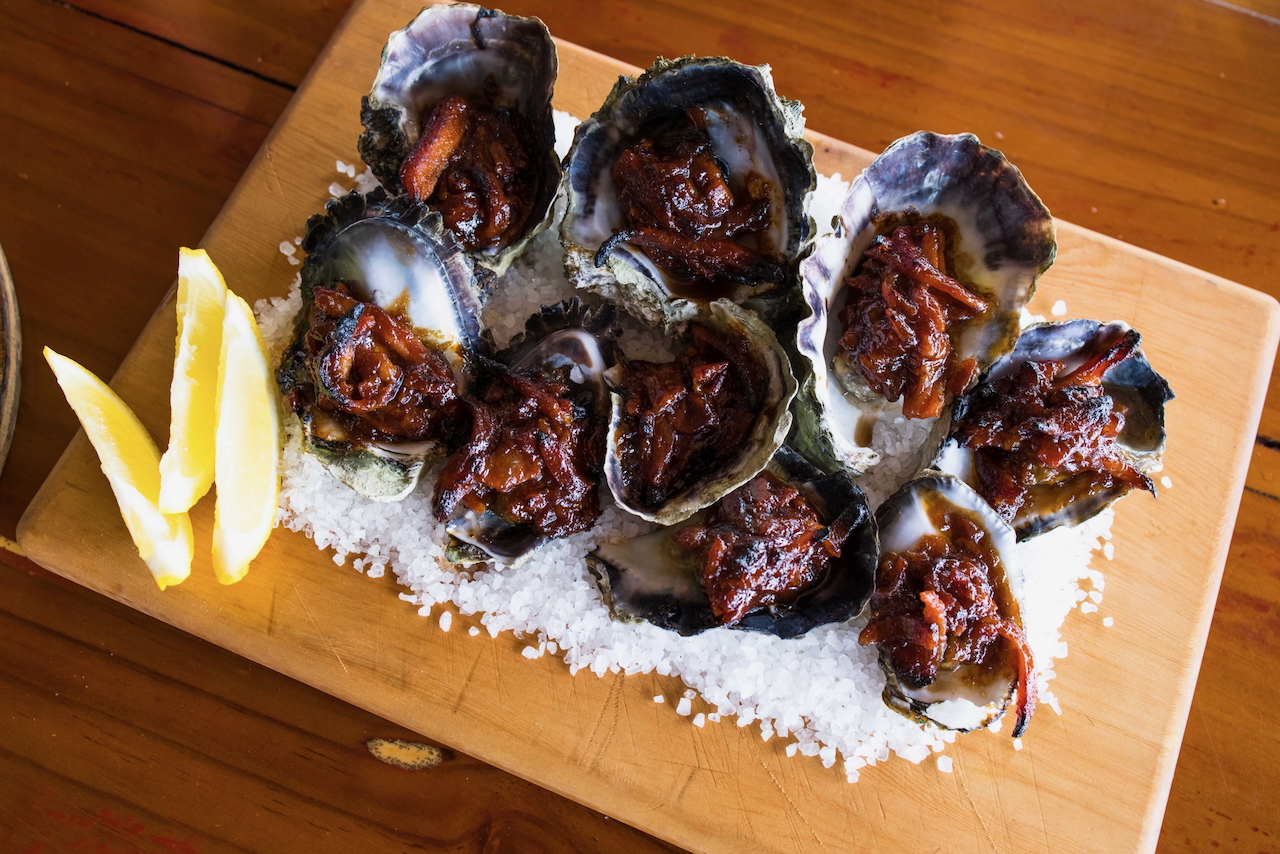
Strong Hooks Matter for Australian Saltwater Fly Fishing
All these flies won’t do much good if they’re tied on weak hooks. In tropical saltwater fly fishing, we are tussling with fish that have crushing jaws (e.g. Blue Bastards, triggerfish), razor teeth (mackerel, barracuda), or sheer brute strength (GTs, tuna). It’s essential to use high quality, corrosion resistant hooks that won’t bend or break. We highlight two hook models we trust for Aussie fly fishing. Our connections with Australia’s best fishing charter businesses mean we understand the demands on tackle. For more information, email fish@fishingearth.com
- Gamakatsu SL12S: A classic and ubiquitous saltwater fly hook, the SL12S is a short shank, wide gap hook that’s extremely sharp and strong for its wire size. These hooks were originally popularised for tarpon flies, but anglers quickly realised they work for almost everything. The SL12S features a straight eye and a 1X heavy wire gauge, meaning it can handle trophy class saltwater species without issue. We tie many of our crab and baitfish flies on SL12S hooks in sizes from #2 up to 4/0. They penetrate easily (sticky sharp out of the package) and the tin plating prevents rust in the salt. For flats species like permit and Blue Bastards, an SL12S in size 1/0 or 2/0 is ideal – strong enough for a hard fight, but not so thick as to reduce hook ups on wary fish. We particularly like that the short shank reduces leverage (less chance of the fish throwing the hook during a fight).
- Ahrex SA270 “Bluewater” Hooks: When chasing the “freight trains” of the tropical salt” – giant trevally, sailfish, big pelagics – we step up to the Ahrex SA270 series. These hooks are purpose built for the largest and meanest fish out there. They come in giant sizes (up to 8/0) and have an extra wide gap and short shank, with a deep throat. The SA270 is made of a heavy A Steel alloy and chemically sharpened. The result is an ultra strong, ultra sharp hook that can handle anything you hook, from GTs to sharks. We tie our biggest brush flies and poppers on 6/0 or 8/0 SA270s. They have a small barb for better penetration and a big straight eye to accommodate thick shock tippet or loops. Importantly, they hold point – even after tussling with a rocky reef or bony jaws, these hooks stay sharp and intact. Whenever you’re gearing up for the top tier predators in Northern Australia fly fishing, these hooks provide peace of mind that your hook won’t be the failure point.
Bottom line: Use the best hooks you can; this is not the place to save a few dollars on cheap hooks. A straightened hook on a big fish is the heartbreak you can easily avoid by choosing proven models like the above, ensuring your Aussie fly fishing trip is a success.
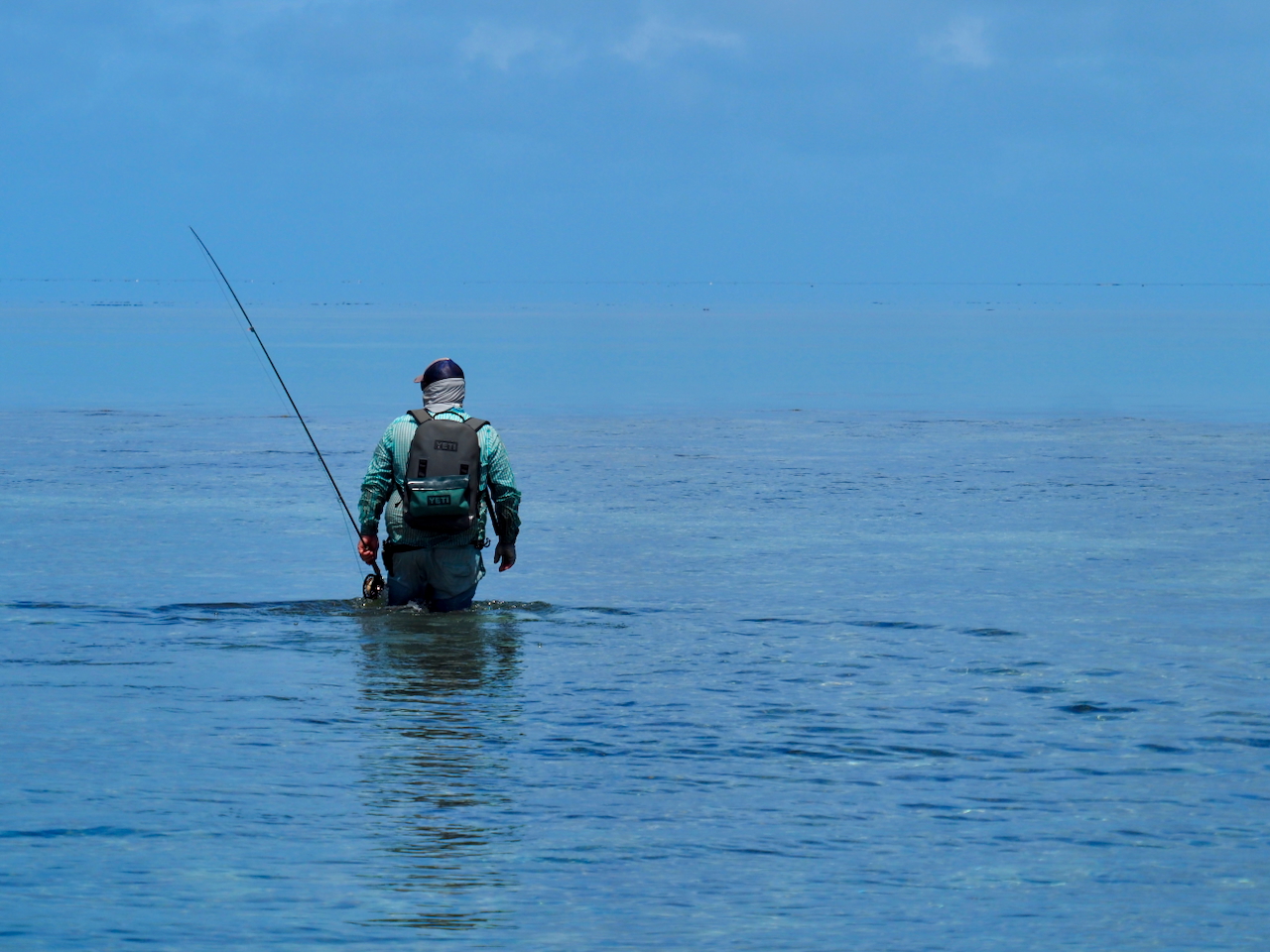
Target Species and Feeding Behaviours in Northern Australia Fly Fishing
Northern Australia’s tropical seas are home to a dazzling array of gamefish. Understanding how each species feeds and what they eat will help you present the right fly in the right way – which dramatically increases your success. Below, we profile the primary target species on this trip, along with their typical behaviours and the flies/presentations that work best for saltwater fly fishing Australia. Our experienced team at FishingEarth can provide tailored advice for targeting these species. For inquiries, please call us at +61418 777 772 or email fish@fishingearth.com
- Permit (Indo-Pacific) in Australia: The permit is often considered the Holy Grail of flats fishing. In Australia’s north, you’ll encounter two species: the common Indo-Pacific permit (Trachinotus blochii) and the larger, snub nosed Anak permit (Trachinotus anak). Permit are selective feeders, cruising shallow sand and rubble flats with their keen eyesight, picking out crabs and shrimp. They tail like bonefish, often tipping up to dig out a crab. These fish are notoriously wary – a permit will scrutinise your fly closely, and any unnatural movement or presentation can send it bolting. Effective Flies: Permit dine primarily on crabs and shrimp, so those are your go to imitations. On these flats, the Alphlexo Crab has become a standout permit fly (some say it revolutionised Indo-Pacific permit fishing). Its realism fools even finicky permit, to the point that in some locales “good permit days” are now measured by fish landed rather than just shots taken. We also do well with small merkin style crabs, and drab shrimp patterns (tan or olive) when permit are finning in very skinny water. Presentation: For permit, the first cast is golden – you want to lead the fish and let the fly settle on the bottom, then give it tiny tweaks to simulate a critter fleeing or burying. Often, permit prefer the fly sitting still on bottom as they approach; they’ll tip down and tail on it. If they follow but don’t eat, try pausing – many permit eats come when the fly has stopped moving and looks “natural.” Long leaders (10+ ft fluorocarbon) and accurate casts are needed. It’s a challenge, but that’s why we love them for permit fly fishing Australia!
- Blue Bastard: Endemic to northern Australia, the Blue Bastard (Plectorhinchus caeruleonothus) is a relatively new species on anglers’ radar (scientifically described only in 2015) – and it quickly earned a reputation as a tough customer. These fish are often encountered in shallow bays and flats with mixed sand and coral rubble. They have bulbous foreheads and an electric blue sheen (especially when fired up). Feeding wise, Blue Bastards behave a bit like permit or drum: they tail on the bottom, using their rubbery lips to vacuum up crabs, shrimps, worms and crustaceans from sand and rock. What makes them tricky is that they can be extremely fussy about fly movement. Anglers have found that Blue Bastards often shy away from a moving fly and only take if the fly is stationary or barely twitched. It’s been said their name comes from how frustrating they can be! Effective Flies: Your best bet is to use crab patterns (Alphlexo, VGDC, etc.) or heavy shrimp patterns and present them right on the fish’s dinner plate. The Alphlexo Crab has proven very effective – in fact, one exploration crew noted that almost every Blue Bastard they caught in the Wessel Islands ate a yellow leg, tan Alphlexo. Durability in flies is key too; bastards have powerful jaws that crush crabs (and flies). Presentation: When you spot a Blue Bastard tailing, quietly get in range and cast the fly a couple feet ahead of its path. Let it sink to the bottom and do not strip. Often the fish will continue along, find the fly in its path and eat it. If it doesn’t see it, a very slight twitch can get its attention, but stop as soon as the fish turns. Hooking them is another challenge – since you often can’t feel the take on a slack line, you have to watch the fish’s behaviour (see a gill flare or the fish lunging down) and then strip strike. They can be “amazingly frustrating” one moment and then suddenly willing the next. Once hooked, hold on tight – they fight dirty, bulldozing for coral and structure. Use that 9 or 10 weight to muscle them out. The reward is worth the effort, as northern Australia is probably the best place in the world to catch a Blue Bastard on fly, making it a prime target for Aussie fly fishing enthusiasts.
- Golden Trevally: Golden trevally (often just “goldens”) are an iconic flats and inshore species across the Indo-Pacific, and Australia has them in abundance. They are striking fish – bright yellow sides with black vertical bands – and are usually seen in schools or small groups. Goldens are aggressive, opportunistic feeders. On flats, they often root in the sand like jacks, blowing jets of water to uncover crustaceans (similar to bonefish behaviour). Around reefs and drop offs, they hunt baitfish and shrimp. Basically, a golden will eat almost anything it can fit in its mouth: crabs, shrimp, baitfish, worms. This means they aren’t typically as selective as permit or bastards, but they can still be spooky in shallow water. Effective Flies: Goldens truly are the generalist in our list – they’ll take crab flies, shrimp flies, and baitfish streamers with equal gusto, as long as you match what they’re feeding on at the moment. When they’re tailing on flats (you might see the yellow tails tipping up), a well placed Alphlexo Crab or VGDC Crab will get demolished. If they’re cruising or shadowing rays, a shrimp or small Clouser can be deadly. Around deeper edges, we’ve caught goldens on medium sized brush flies and Clousers too. It’s good to observe their behaviour: if they’re actively chasing prey (fry jumping out of the water), go with a baitfish pattern; if they’re grubbing on bottom, go with a crab or shrimp. Presentation: Goldens aren’t as finicky about a fly moving or not – in fact, if you strip a fleeing shrimp or baitfish past a golden, chances are it’ll chase and hammer it. They have a tendency to follow a fly a long way (we’ve had goldens follow a stripping Clouser 20 feet and then eat right near the rod tip). So don’t give up on the retrieve. For tailing situations, treat them somewhat like permit: lead the fish, let the fly sink, then give a short hop to get their attention. Once a golden sees something that looks like food, their predatory instinct usually kicks in. One more note: goldens pull hard and often dive for structure like reef or clumps of coral. They are not as brutal as GTs, but on a 9 weight they will put a bend to the cork.
- Giant Trevally (GT) – The Ultimate Fly Fishing Challenge: The apex predator of the Indo-Pacific reefs, the GT is the stuff of legends. In Northern Australia, GTs patrol reef passes, bommie fields, and even occasionally cruise flats or lagoons on high tide. They can reach 100+ pounds, though fish in the 20–50 lb range are more common on our trip. GTs are ferocious hunters that primarily prey on other fish – anything from mullet and fusiliers to small tunas – and they are known for insanely explosive strikes. They also exhibit clever behaviours like shadowing sharks or rays to ambush spooked prey. Famously, GTs have even been documented leaping to eat seabirds in certain locales (they really are that aggressive). Effective Flies: GTs love big, loud presentations. Top choices include the NYAP poppers and similar surface flies, as well as large baitfish streamers (brush flies, big deceivers, etc). They have huge mouths and will inhale surprisingly large prey – a 8/0, 10 inch fly is not too large for a big GT. In fact, large GTs often prefer a substantial target, which might be why the large brush flies and poppers work so well (they create a big profile and disturbance). GTs will also eat medium flies (we’ve caught smaller GTs on 2/0 Clousers intended for other species), but if you’re specifically targeting GTs, tie on something chunky that will get – and hold – their attention. Presentation: Violence is the name of the game. For surface flies, cast near structure (reef points, channel entrances, bomboras) and strip as fast as humanly possible, with hard, loud pops if using a popper. If a GT is in the area, the commotion usually brings them up. Be ready – often they hit just as you’re about to pull the fly out of the water (the classic GT “boat side” eat that makes your heart skip a beat). For subsurface flies, a fast roly poly retrieve or long quick strips work well. GTs aren’t subtle: if they want it, they’ll charge it down. One tip: never trout set on a GT. Always use a strip strike and keep the line tight, because if you miss the first eat, a GT often comes back around for a second hit – but only if the fly is still moving away. Once hooked, brace yourself. Big GTs will head straight for the reef ledges to cut you off. That’s why we fish 80–100 lb shock tippets and seriously beefy gear (and even then, you lose some). Put the maximum drag you can and try to turn their head early. It’s brutal, arm wrenching combat – and we wouldn’t have it any other way for GT fly fishing in Australia.
- Pelagics (Tuna, Mackerel, etc.): In addition to reef and flats species, our northern waters are frequented by open water pelagics. Longtail tuna, mackerel (Spanish, shark mackerel), queenfish, trevally species like bludger or tea leaf, and even cobia can crash the party. These fish roam the deeper areas and often feed in schools, corralling baitfish to the surface. You might spot birds working and find a feeding frenzy of tuna tearing into bait – prime time to cast a fly for tropical fly fishing Australia. Effective Flies: Nearly all pelagics focus on baitfish, so your Clousers, slim streamers, and medium sized baitfish patterns come into play. For tuna, smaller flies (Size 1 to 2/0 white Clousers, for example) that match small bait (anchovies, sprats) are key, since tuna can be selective on bait size. For mackerel, flashy streamers or poppers make them attack out of aggression – but beware their teeth. Sometimes a short bite tippet of wire (30 lb single strand or 40 lb coated wire) is necessary if you specifically target macks. Queenfish, a common pelagic flat crossover species, absolutely love surface flies – a queenie striking a popper is aerial acrobatics at its finest. So we’ll often use poppers/NYAPs for them or flashy baitfish flies. Presentation: For tuna and mackerel, speed is key. They are used to chasing fast prey. Strip very quickly; in the case of tuna, if they’re busting, just get your fly near the action and strip – hookups are often instant if the fly matches the hatch. For mackerel, a fast, steady strip works – they hit like a freight train, sometimes cutting the leader if they hit head first. (It helps to use a longer fly so they hopefully get hooked in the mouth rather than biting the line above it.) Queenfish will chase down a fly and often leap clear out of water when hooked – tons of fun. Some reef edges hold GT sized Spanish mackerel and barracuda; those you might hook on a popper meant for GT. There’s not much special technique there – if they want it, they’ll grab it during your normal retrieve. Just be prepared for blistering runs.
- Reef Dwellers (Snapper, Grouper, etc.): By reef dwellers, we mean the variety of fish that live and around coral structures – species like coral trout (grouper family), red bass (red snapper species common on Pacific reefs), emperor fish, sweetlips, and many others. On a trip to remote reefs, you’ll inevitably catch some of these as bycatch if nothing else. They tend to ambush prey from cover or patrol short distances around bommies. Effective Flies: Reef species are less picky – they’ll eat whatever passes by that looks alive. We’ve caught coral trout on poppers, red bass on crabs, emperors on Clousers… you name it. However, generally a baitfish fly or a popper will attract most reef fish, since many are used to preying on small fish that stray too far from shelter. Shrimp/crab patterns dropped near the coral heads can entice species like spangled emperors or sweetlip (which feed on crustaceans around the reef). Presentation: Get your fly close to the structure – many reef fish won’t move far out to chase something (GTs being the exception). Strip it past the structure to trigger a reaction from a hiding fish. Be ready to pull them away from the structure once they eat, or they’ll dive back in and cut you off. This is why even for “smaller” reef fish, we often use 20-30 lb tippet – abrasion resistance is needed around coral. Some fish like the coral trout will actually follow a fly all the way to the boat like a curious dog, then strike at the last second. So always fish your fly to the very end of the retrieve!
In summary, Northern Australia’s species run the gamut from ultra finicky (permit) to outright reckless (mackerel), and everything in between. A successful angler will be observant and adaptable – match your fly choice to what the fish are eating and tweak your presentation to how they’re behaving. The beauty of this region is the sheer variety: you might be delicately dropping a crab in front of a tailing permit in the morning, and by afternoon you’re launching a popper at a pack of charging GTs. Stay versatile and you’ll be rewarded with some of the most exciting fly fishing in Australia. For more information, please call +61418 777 772 or email fish@fishingearth.com
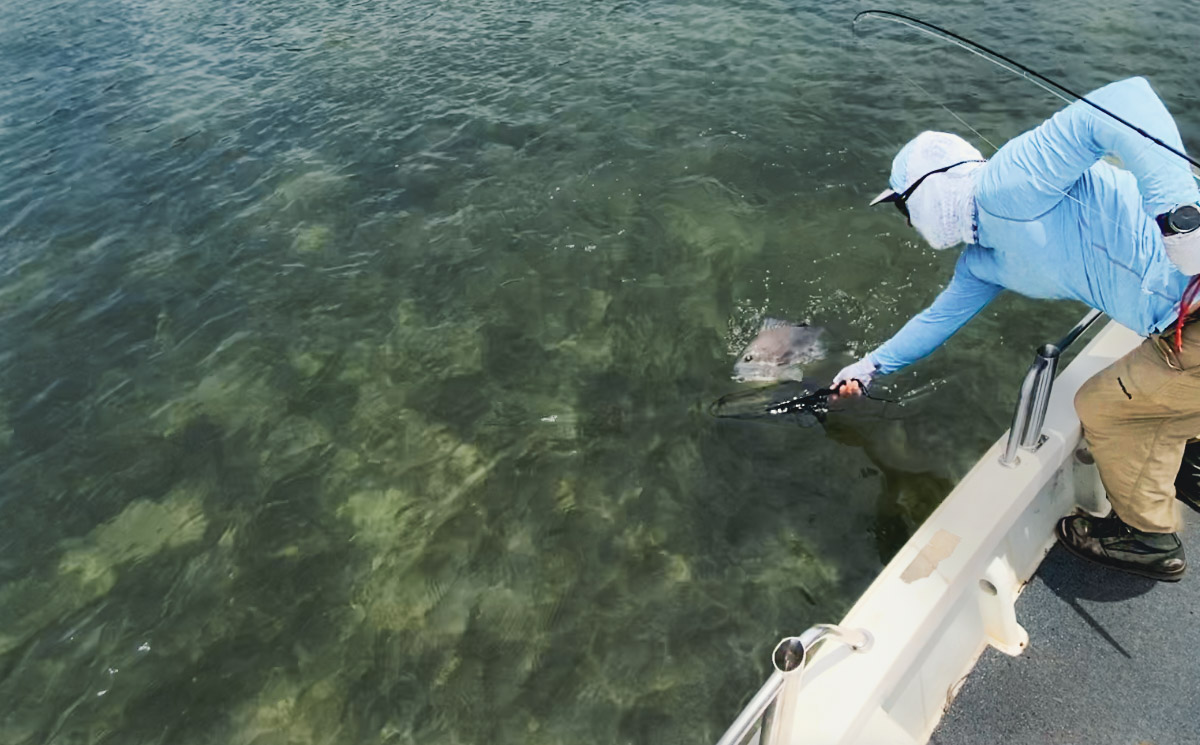
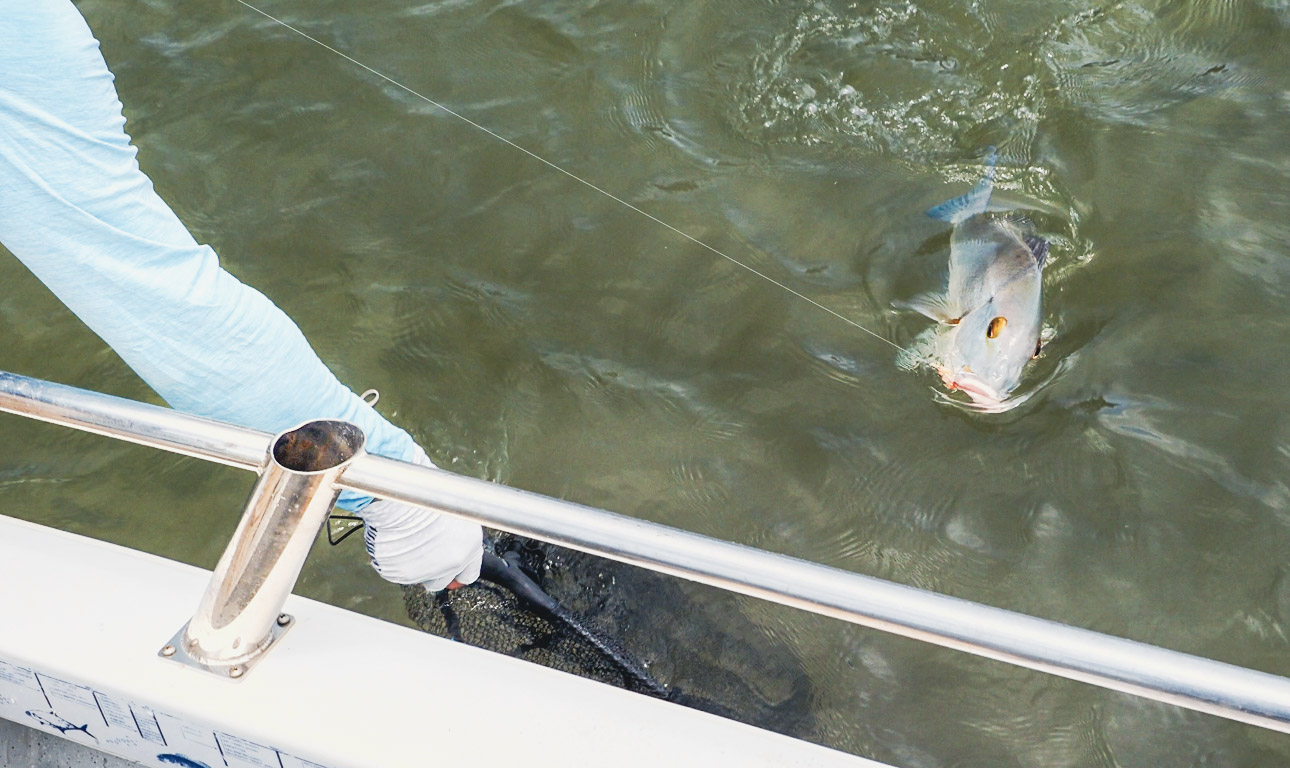
Fishing Gear Recommendations for Australian Fly Fishing
Having the right gear is vital for both success and enjoyment on a remote tropical expedition. You need equipment that can handle powerful fish, harsh saltwater conditions, and the variety of scenarios (from shallow flats to deep bluewater) you’ll encounter. Below we detail our recommended rod, reel, line setups, leaders, and essential accessories. This kit is designed for a five-day trip in Far North Queensland’s tropics, but the principles apply broadly to most saltwater fly fishing Australia adventures. Remember, our recommendations are based purely on what has proven to work – we use this gear ourselves, and there’s no sponsorship influencing our choices. The team at FishingEarth works closely with **Australia’s best guides** to ensure these recommendations are current and effective. For more information, feel free to call us at +61418 777 772 or send an email to fish@fishingearth.com
Rods and Reels for Aussie Fly Fishing
Bring at least two rod outfits per angler for redundancy and to cover different line weights. We suggest the following for your Aussie fly fishing trip:
- 9-weight or 10-weight Setup (x2): Your workhorse for flats and light reef fishing. A fast-action 9wt or 10wt rod, paired with a quality large arbor reel, will handle permit, trevally, queenfish, Blue Bastards, etc. We actually recommend bringing two identical setups in this class – that way if one rod breaks or a reel fails, you have a backup ready (plus you can rig one with a different line type, see below). The reel should have a smooth, reliable drag (at least 20 lbs of drag pressure capability). Load each reel with 200–250 metres of 30 lb backing (gel spun or dacron). These species make long runs, and in open water you might see your backing knot, so capacity matters. For lines: one spool should have a tropical floating line (WF9F/WF10F) for shallow work and surface presentations. The other should have an intermediate sink tip line or full intermediate sinking line. A clear tip tropical line (e.g. Scientific Anglers Grand Slam Clear Tip, as used by some anglers in Weipa) is great – it stays invisible and can get subsurface when needed. The sink tip helps when fish are holding deeper (e.g. drop offs for goldens or when dredging a channel) or in wind to cut below the chop. Tropical lines have a special stiff core and coating for high heat environments, so they won’t turn limp in the North Queensland sun – don’t use a cold water line, it will become a noodle in 30°C weather. Between the two 9/10wt outfits – one floater, one sink tip – you can cover 90% of scenarios on the flats and inner reefs.
- 12-weight “Big Gun” Setup (x1): This is your rod for the GTs and big pelagics. A 12wt fast-action rod with a heavy duty reel is needed to throw huge flies and put maximum pressure on very strong fish. The reel should be top notch, with a strong drag (ideally 15+ kg / 30+ lbs of max drag) and plenty of backing capacity – we recommend at least 300 metres of 50 lb braid backing on the 12wt. When a GT or tuna runs, they can take hundreds of metres in a blink, so you want that insurance. Use a tropical floating line rated for 12wt that has a 50–60 lb core. A specialised GT or billfish line is ideal; these have tough cores and often short, aggressive heads to help turn over big flies. We prefer a floating line for the 12wt because most GT strikes in our area happen in relatively shallow water or on top. If needed, we add a short T 14 shooting head or a heavy sinking leader to go deeper. Some anglers like intermediate lines for GTs; those can work too – the key is the line must handle heat and big flies. If you don’t own a 12wt and don’t plan to use one often, note that some lodges/outfitters rent 12wt setups (for example, a heavy rod/reel can often be hired for a fee if you break it). Still, there’s nothing like having your own rig you’re familiar with when that fish of a lifetime shows up for tropical fly fishing Australia.
Why these rod choices? A 9 or 10-weight is the classic all around saltwater fly rod – heavy enough for moderate winds and decent sized fish, but still light enough for long casting days and delicate presentations to spooky flats fish. In fact, as one travel expert noted, the flats species in Australia can be targeted with essentially the same rig used for Caribbean permit (9/10wt with floating line, 17–20 lb leader) – convenient and versatile. The 12-weight, on the other hand, is there to give you stopping power and casting ability for the true monsters (GT, etc.). Trying to land a big GT on a 10wt is generally a losing proposition; you need the lifting power and leverage of the 12. Also, throwing a big popper or a giant brush fly is vastly easier with a 12wt rod that’s built for it. By covering these bases, you won’t be under gunned when that 50 lb GT appears on the edge of the flat (a situation you want to be ready for in Northern Australia fly fishing!).
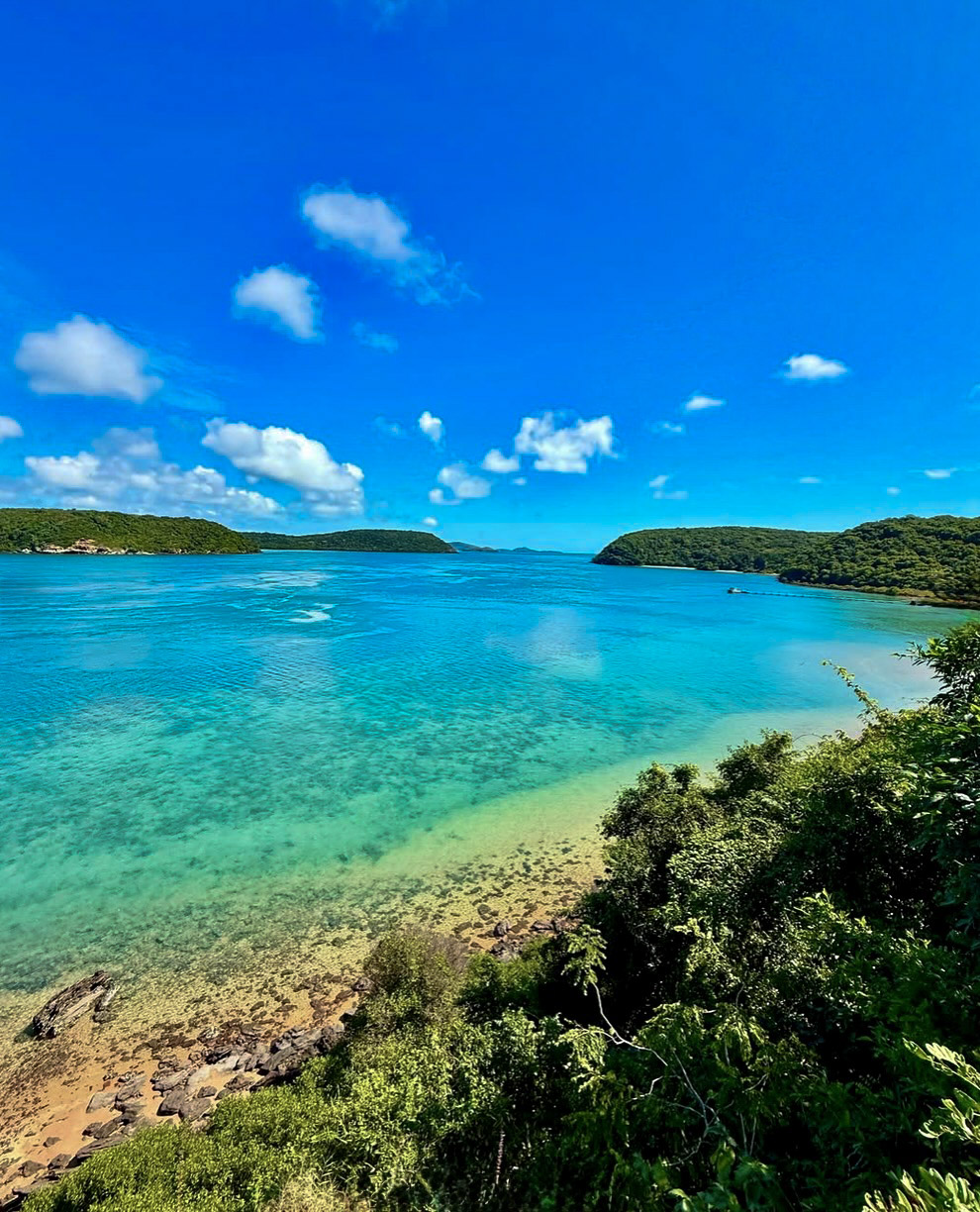
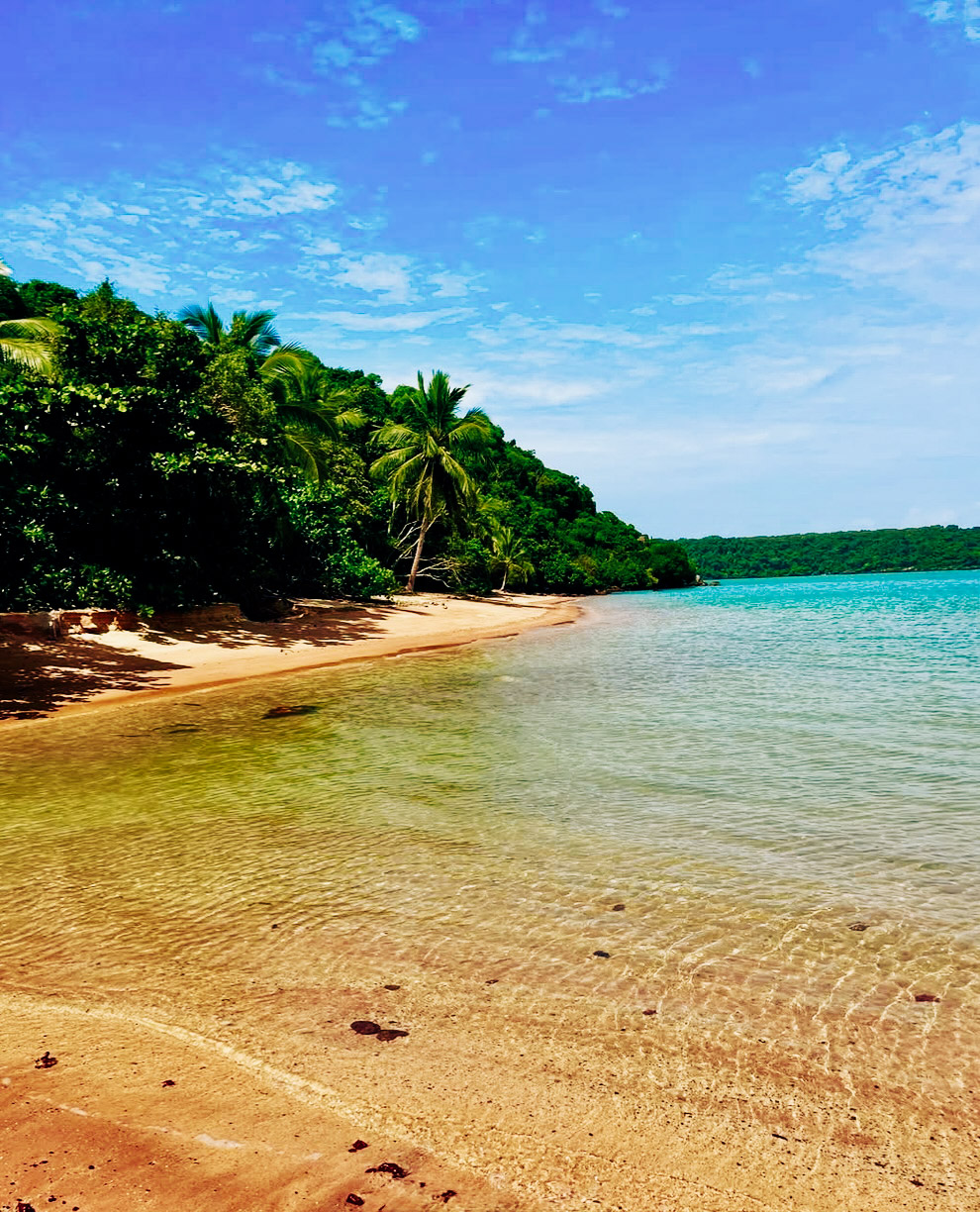
Lines and Leaders for Saltwater Fly Fishing
We touched on lines above, but to summarise and add leader considerations:
- Fly Lines: Use tropical rated lines appropriate to rod weight. For 9/10wts, have a Floating and an Intermediate/Sink Tip. For the 12wt, a Floating (or Intermediate if you prefer subsurface work for GT). Tropical lines have cores that remain stiff in heat and coatings that won’t melt or get sticky. A limp line in these conditions is a nightmare for casting and stripping. Some modern tropical lines also have textured coatings which help shooting; those are nice but not mandatory. If possible, bring an extra fly line or two – line damage can happen (backing knot cuts through, coral nick, etc.), and in the field you’d be glad to have a spare line to spool up for your Aussie fly fishing trip.
- Backing: We specified 30 lb on 9/10wt reels (~250m) and 50 lb on the 12wt (~300m). Why 50 lb on the big reel? Because not only do big fish run far, they run hard. The thinner 50 lb gelspun allows more capacity than say 80 lb, yet is stronger than 30 lb so you have a margin if you need to really put the brakes on. Also, if a GT wraps your line on coral, the thicker backing resists breaking a bit more than ultrathin stuff. Always use bright coloured backing (orange, yellow) so you and the guide can see how far the fish is and if it changes direction.
- Leaders & Tippet: In the crystal clear waters of tropical flats, we rely heavily on fluorocarbon leaders for stealth and abrasion resistance. For your 9/10wt outfits targeting flats species, bring fluorocarbon in 16 lb, 20 lb, and 25 lb test. Pre tied tapered leaders in 10–12 ft length (16–20 lb) are great for permit and Blue Bastards that require a softer presentation. You can then add a short section of 20–25 lb fluoro tippet if needed (for instance, around coral edges where a bit more strength is warranted or for slightly larger species like golden trevs). For the 12wt GT rig, we suggest a two part leader: about 6 feet of 50–80 lb straight mono or fluoro, then a shock tippet of 100 lb mono/fluoro about 2 feet. The shock tippet is critical for GTs – it’s your insurance against their raspy jaws and any coral they might brush against. Some anglers go even heavier (130 lb) but 100 lb quality fluoro is often sufficient and slightly easier to knot. For species like Spanish mackerel or barracuda, consider carrying a small spool of knot able wire (like 30–40 lb single strand or 45 lb nylon coated wire) to use as bite tippet. If macks show up and start cutting you off, a 6 inch section of wire between your fly and leader can save heartbreak (mackerel are not leader shy). For general reef fishing (snappers, etc.), a short 40 lb fluoro bite tippet on your 9/10wt leader can help prevent cut offs without needing steel.
Leader Tip: When flats fishing for permit or bastards, go as light as you reasonably can – if you can get away with 16 lb tippet that day, do it. You’d be surprised how leader shy big permit can be even in remote areas. Conversely, when dredging a deep cut for reef fish, don’t shy from 30 lb; those fish don’t care and you’ll want the strength to keep them out of structure. For more information, call +61418 777 772 or email fish@fishingearth.com
Essential Accessories for Tropical Fly Fishing
Finally, let’s cover the must have gear and accessories that make your life easier and safer on the water:
- Quality Pliers/Forceps: A sturdy pair of stainless pliers is indispensable. You’ll use pliers for de barbing and removing hooks (some fish like GTs have tough, toothy mouths – you don’t want fingers in there). Pliers also cut heavy leader or wire, crimp split shot if you use any, and can help in de tangling knots. Look for ones with a built in line cutter that can handle at least 100 lb mono. And make sure they have a lanyard or holster – you do not want to drop your only pliers overboard on day 1.
- Line Clippers/Nippers: A corrosion resistant clipper on a zinger is great for quick tippet cuts and knots. You’ll re tie flies often (changing patterns, or retying after catching a fish or nicking the leader), so a good nipper saves your teeth and makes clean cuts.
- Waterproof Packs and Fly Storage: With the possibility of wading or sudden tropical squalls, having a waterproof day pack or hip pack is very useful. This keeps your fly boxes, camera, phone, etc., dry. A roll top dry bag backpack can double as both storage and a wading pack. Some anglers use a waterproof sling pack on the flats. For fly boxes, use boxes with strong latches or waterproof gaskets – saltwater flies are often large and can rust quickly if wet. It’s good to have a few large boxes to organise by pattern type (e.g., one for crabs/shrimp, one for baitfish, one for poppers). Label them for quick access.
- Wading Boots and Socks: If you’re fishing flats or shallow reef, proper wading footwear is critical. The bottom can be jagged coral, sharp shells, or even venomous creatures like stonefish or urchins. We recommend sturdy flats boots with hard soles (rubber or composite) and high ankle support. These should be worn **with** neoprene socks or gravel guards to keep sand and coral bits out. The neoprene sock (often 2–3mm thick) also prevents blisters and gives a snug fit. Make sure your boots fit over the socks comfortably. If you’re fishing from a skiff or mothership mostly, you might wear them less, but inevitably there will be times you hop out on a flat or walk a sand cay. In tropical heat, good boots can be the difference between enjoying a day wading and cutting the day short due to cut feet or sting pain.
- Polarised Sunglasses (multiple lens options): This is essential sight fishing gear – you won’t see the fish without them. **Polarised glasses** cut the surface glare and allow you to spot fish and structure underwater. We suggest bringing **two pairs:** one with **green mirror/amber lenses** and one with **copper/bronze lenses.** The green mirrored lenses (typically an amber base with a green reflective coating) excel in bright tropical sun and high glare situations – they make fish and bottom structure really “pop” against the water. On cloudier days or lower light (early morning, late afternoon), a plain **copper lens** or amber lens transmits more light and increases contrast, helping you see in the gloom. By carrying both, you can swap based on conditions and ensure your eyes have the best tool. Also, if one pair gets lost or broken, you have a backup – you do **not** want to be stuck without polarised glasses. Pro tip: use a **retainer strap** so glasses don’t fall overboard, and consider a hat mounted flip down magnifier if you need help tying knots (rather than swapping to reading glasses each time).
- Sun Protection Clothing: We’ll detail clothing more in the packing list, but as “gear,” items like **sun gloves,** a **wide brim hat or cap with neck cape,** and **neck gaiters (buffs)** are crucial. We treat these as part of our fishing gear because without them, the tropical sun will roast you and cut your fishing day short. Lightweight sun gloves protect your stripping hand from UV and line cuts. A neck buff can be pulled up over face/ears for sun and also helps with wind/chill during boat runs. A hat with good coverage keeps your face and neck shaded (and polaroids work better with a dark underside brim to cut glare). We prefer technical fishing apparel with **UPF50+ rating** – it lets you focus on fishing, not worrying about sunscreen reapplication every hour.
- Miscellaneous but Important: Don’t forget a **good pair of pliers** for the boat (as mentioned), as well as things like a hook file (to touch up hook points after contact with coral or multiple fish), super glue or UV cure resin (handy for quick fly repairs or leader fixes), and spare **fly lines/leaders.** A **landing net** is generally not used in saltwater flats fishing – most fish are tailed (grabbed by the tail) or lipped if safe. However, if you have space, a collapsible wading net can help with handling fish like Blue Bastards or permit without putting hands near their spines or gill plates. Up to personal preference and how much wading alone you expect to do.
- Rental Gear Note: As mentioned, if you don’t own a 12 weight or don’t want to travel with too many rods, check if the operation provides loaner gear. Many outfitters in remote Australia have **10–12wt outfits for hire,** usually for a daily or trip fee (and often a “you break it, you buy it” policy). This can be convenient, but be sure to inquire about the quality of the gear (most will be decent, like Scott or Sage rods and Tibor or Hatch reels, etc.). Still, there’s nothing like having your own rig you’re familiar with when that fish of a lifetime shows up.
Why We Choose This Gear: Every item above has been chosen through hard earned experience. The rod quiver covers all fish from 1 lb to 100 lb. The tropical lines ensure performance in heat. Strong backing and leaders mean fewer lost fish to break offs. Fluorocarbon leaders give stealth for those extra few hookups on skittish fish. And accessories keep you safe, comfortable, and efficient – for example, UV protective clothing keeps you focused on fishing rather than sunburn, and proper boots mean you can wade that beautiful flat without ending up with cut feet or a nasty stonefish envenomation. We also emphasise gear with no compromise on quality – because in remote areas of Australia, gear failure is not just frustrating, it can be trip ending. We don’t skimp on hooks, we don’t skimp on reels (your reel is your engine – a cheap one will seize up or overheat on a big fish). By investing in and packing the right gear, you dramatically increase your odds of success and you’ll enjoy the journey knowing you’re equipped like an expert for saltwater fly fishing Australia. For any questions about gear, don’t hesitate to reach out: +61418 777 772 or fish@fishingearth.com
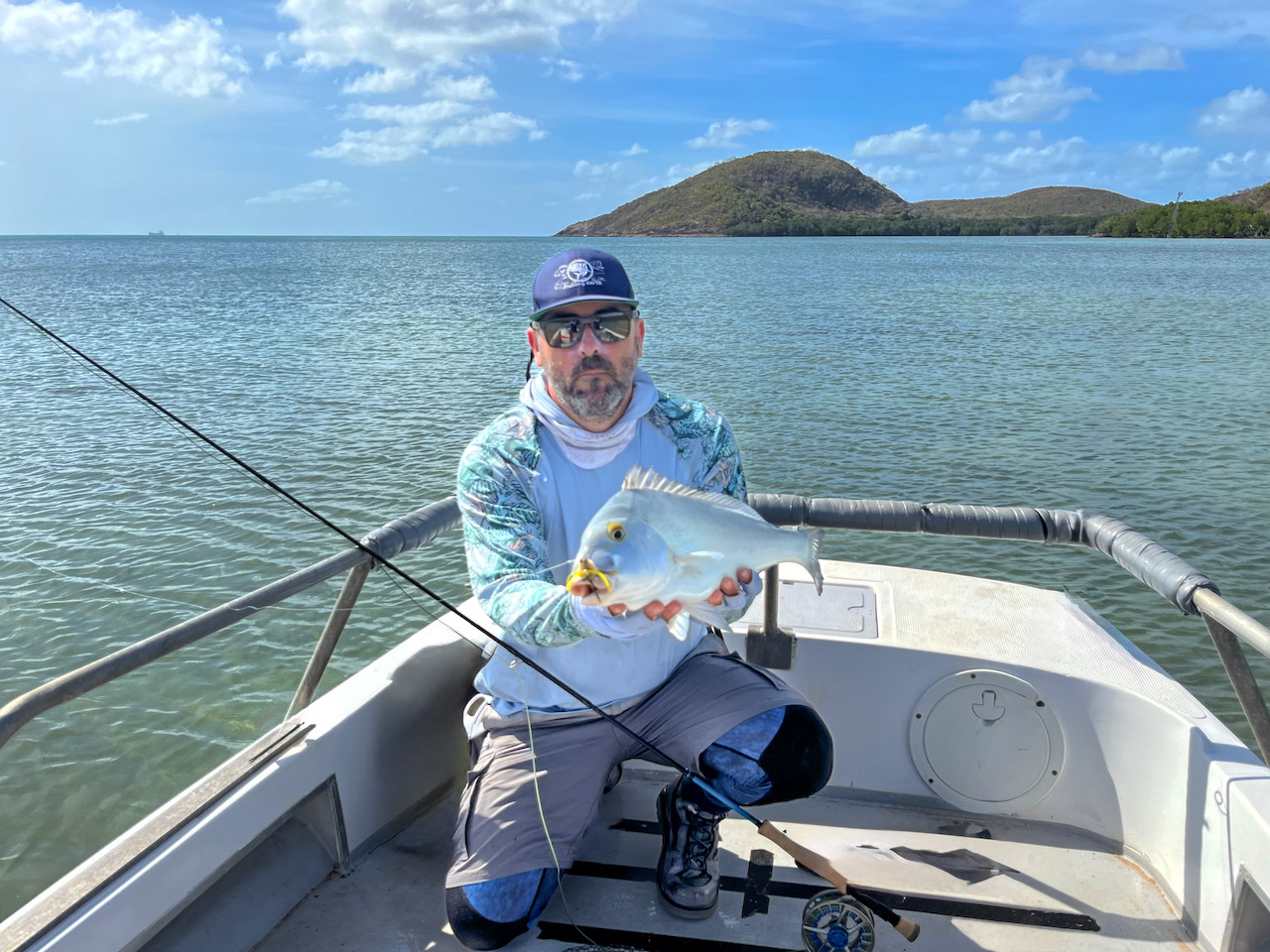

Packing List and Clothing for Your Aussie Fly Fishing Trip
Travelling to northern Australia often involves small planes or charter flights with strict baggage limits. For example, flights to Lizard Island often have a **20 kg luggage limit,** so efficient packing is essential. Fortunately, you won’t need a huge wardrobe on a fishing focused trip – the liveaboard boat or lodge typically offers laundry service or at least a way to rinse clothes, so you can re use gear. The key is to bring functional, quick dry clothing and sun protection layers, along with personal items that keep you comfortable in a tropical, marine environment. Below is a packing list tailored for a 5 day trip on a mothership/yacht based out of Lizard Island (Great Barrier Reef). It assumes you’ll spend long days on the water (in a skiff or wading) and evenings relaxing on the boat. We’ve broken it into categories for clarity for your Northern Australia fly fishing adventure. The team at FishingEarth has curated this list based on years of experience with Australia’s best guides. For more information, please call +61418 777 772 or email fish@fishingearth.com
Fishing Clothing (Technical) for Australian Conditions:
- Quick Dry Fishing Shirts (2) – Long sleeved, lightweight shirts with UPF 50+ sun protection. Ideally get the hooded type with a built in neck gaiter or use with a separate buff. These shirts should breathe well and dry fast from sweat or spray. We recommend two so you can alternate or in case one gets torn. A **sun hoody** design offers great neck and ear protection.
- Quick Dry Fishing Pants (2) – Light, fast drying pants (or long shorts) that are also UPF rated. Some anglers prefer shorts, but we strongly advise long pants or **leggings** for sun and stinger protection. Consider **full length leggings or “skins”** (even under shorts) – many of us wear compression leggings or dedicated fishing tights to guard against jellyfish stings and sun on the flats. They also dry quickly and are comfortable in heat.
- Neck Buffs (2) – These tubular fabric gaiters protect your neck and face from sun. Bring two so you always have a dry one (one might get soaked with sweat or salt each day). They also shield you from wind burn during boat runs.
- Sun Gloves (1 pair) – Fingerless UV protective gloves to save the backs of your hands from intense sun. They also help with stripping friction.
- Hat (1) – A good hat is vital. Ideally a wide brimmed hat (like a safari or sombrero style with a dark underbrim to reduce glare) for maximum sun coverage. Alternatively, a baseball cap with a **neck cape** (legionnaire style) can work. Make sure it fits securely or has a chin strap; the wind from boat rides can send hats flying.
- Polarised Sunglasses (2 pairs) – As discussed in gear, one with **green mirror/amber lens** and one with **copper (or amber) lens.** This covers varying light conditions. Pack them in hard cases for travel and a lens cloth.
- Rain/Wind Jacket (1) – A lightweight, **waterproof shell jacket** that can handle tropical rain showers and spray. It doesn’t need heavy insulation, just a breathable raincoat. Evenings on the water or sudden squalls can get surprisingly cool when you’re wet and the wind kicks up. Also useful if we get caught in a downpour while fishing – you stay comfortable and can keep fishing.
- Wading Boots (1 pair) – Sturdy flats boots with ankle support, as described earlier. Make sure they are broken in **before** the trip to avoid blister issues.
- Neoprene Wading Socks/Gravel Guards (1-2 pairs) – These will accompany your boots. Having a spare pair is nice in case one doesn’t dry overnight or develops a tear.
- Deck Sandals or “Thongs” (Flip Flops) (1 pair) – For use on the boat when not in boots. In Australia, flip flops are affectionately called “thongs.” They let your feet air out and are handy for moving around the boat deck or beachcombing a cay. Make sure they have non marking soles (most boats require that).
Casual/Evening Clothing:
- T-Shirts or Short Sleeve Shirts (2) – Comfortable shirts for when you’re done fishing and want to relax on the mothership or for travel days. You can get by with two thanks to laundry; one could be a quick dry fabric tee that doubles as an extra fishing shirt if needed.
- Lightweight Pants or Shorts (1-2) – For lounging or travelling. One pair of casual shorts for around the boat or a swim short is great. And one pair of lightweight long pants (zip off cargo pants work too) if evenings get buggy (mosquitoes, etc.) or just to cut the chill after sunset.
- Underwear and Socks – Bring enough for 5+ days, but since laundry is available, you don’t need a ton. Perhaps 3-4 pairs of quick dry underwear and a couple pairs of socks (mostly worn during travel or if it gets cool; you likely won’t wear socks while fishing in this climate unless in boots).
- Lightweight Fleece or Long Sleeve – Although rare in the tropics, sometimes a thin fleece or long sleeve tee for cooler nights or overly air conditioned cabins is nice. You likely won’t need anything heavy.
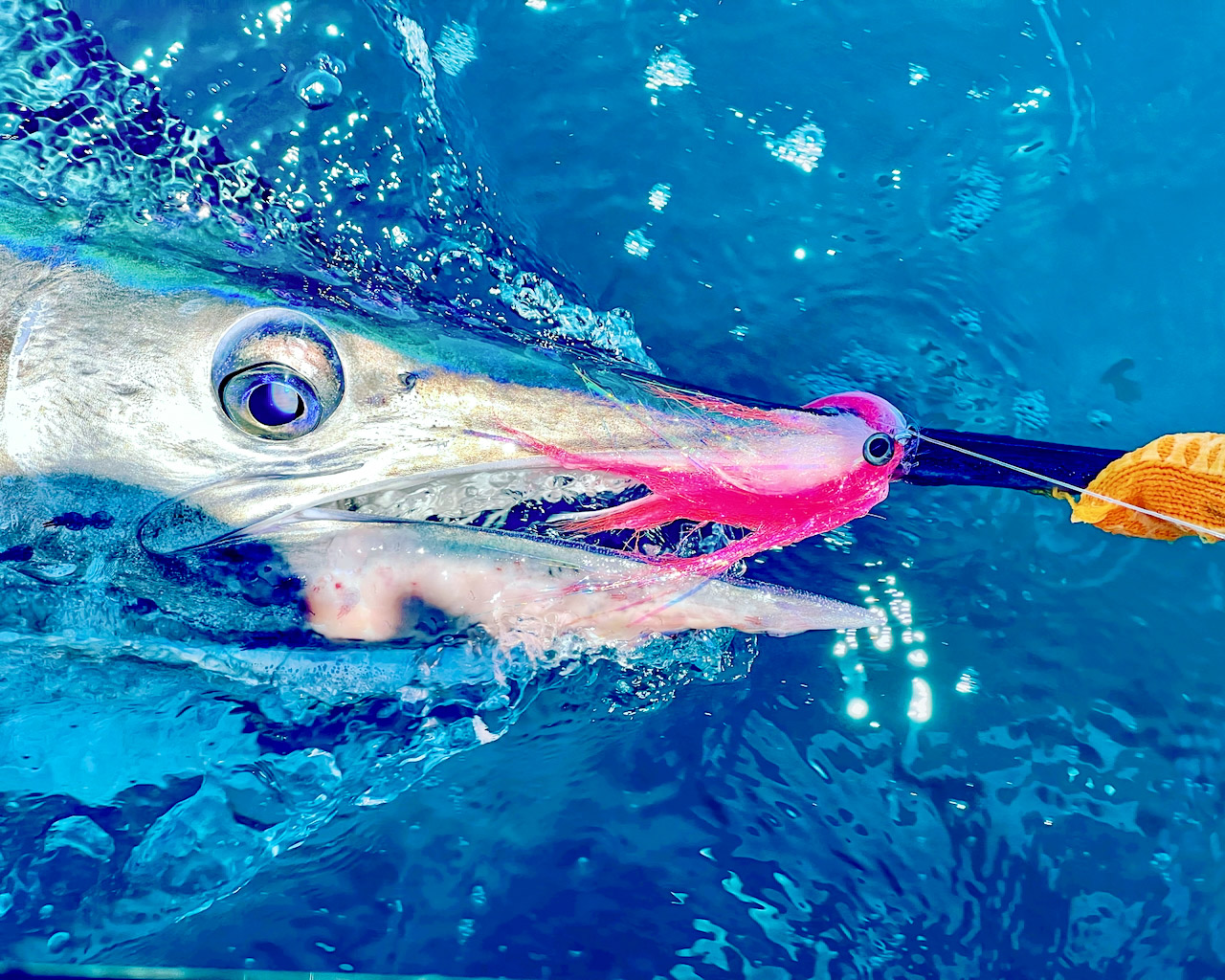
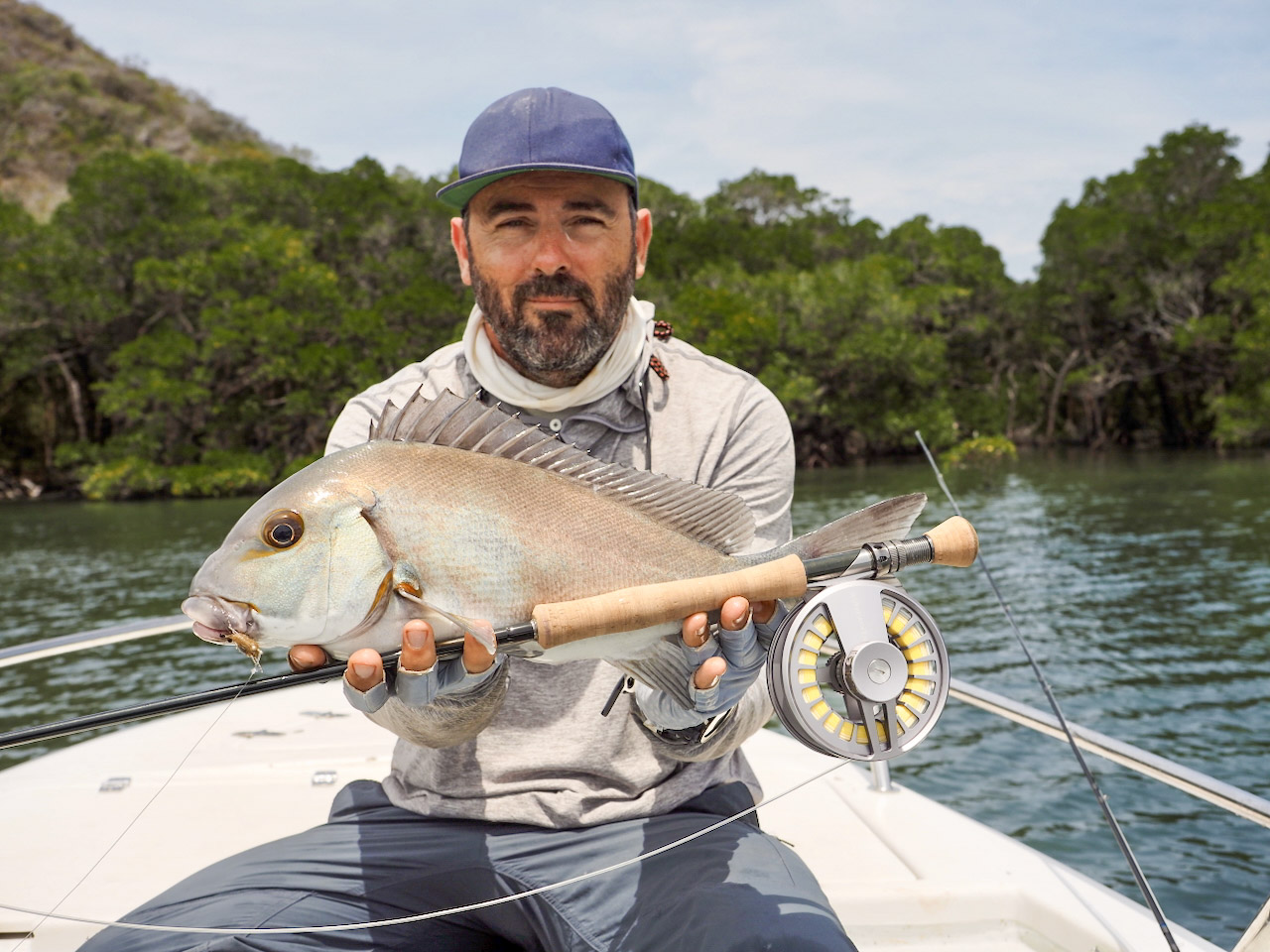
Other Essential Items for Your Tropical Fly Fishing Expedition:
- Sunscreen (high SPF) – Even with full cover clothing, apply reef safe sunscreen to any exposed skin (face, neck, etc.) each day. The tropical sun is extremely intense. A zinc based sunblock stick is handy for face/lips.
- Insect Repellent – Depending on the season, biting insects (sandflies, mosquitos) can be present, especially near mangroves or on the island in the evenings. A small bottle of repellent (preferably DEET free if you’ll be handling fly lines and gear – something like Picaridin) is good to have.
- Personal Medications – Bring any prescription meds you need, plus basic first aid: seasickness pills if you’re prone (the boat will anchor in calm lagoons usually, but sometimes you run in open water), pain reliever, antihistamine (for any allergy or mild reaction to bites/stings), and band aids/blister pads for minor cuts. A small personal kit is wise. The boat will have a larger first aid kit for serious needs.
- Camera Gear – You’ll want to capture the memories! A waterproof action camera (GoPro) or a good DSLR/Mirrorless with a telephoto for wildlife/fish shots. Ensure you have dry protection – even ziplock bags can help. Extra batteries and memory cards (power might be limited or only at night on the boat). If you have a waterproof phone case, that’s great for quick snaps on the flats.
- Waterproof Backpack or Dry Bag – We mentioned this as gear, but it’s also part of packing. Use it as your carry on or checked bag to double duty protecting your stuff. On daily fishing excursions, a 20-30L waterproof backpack can hold your flies, camera, snacks, etc. without worry of waves or rain.
- Travel Documents – Passport, fishing licenses or permits (if required), travel insurance info, etc. (Keep these safe and dry – e.g., in a waterproof document pouch in your luggage).
- Miscellaneous – A headlamp or small flashlight (for finding gear in your cabin or night fishing attempts), a book or Kindle for downtime, a multi tool or knife (packed in checked luggage) for miscellaneous cutting needs, and maybe some **fly tying kit** if you’re keen and have space (tying a few flies in the evening can be fun, but only bring minimal tools/materials due to weight limits).
Given the 20kg limit, you’ll notice this list is pretty lean. Wear your heavier items in transit (for example, wear one of your fishing shirts, long pants, and boots on the plane if allowed – saves luggage weight and space). The beauty of a live aboard is you can rinse clothes in fresh water and hang them to dry each day (the sun will dry them in no time). Many such trips explicitly advise that “daily laundry onboard minimises clothing needs,” which we’ve echoed here. Two sets of fishing outfits mean you alternate and always have one dry. Two casual outfits mean you’re not in stinky fishing clothes at dinner. It’s a good balance.
Why These Items? Every item in the packing list serves a purpose for comfort, safety, or practicality:
- Sun protective apparel: Long sleeves, hoods, buffs, etc., keep harmful UV off your skin – absolutely critical in the tropics. They also are quick drying to handle sweat, rain, or a dunking without staying wet. Modern fishing clothing with high UPF means you can fish through midday without frying your skin. You’ll notice **Aussie guides** completely covered – that’s the smart play.
- Polarised glasses (green mirror & copper): Having the right lens tint can make a huge difference in sighting fish. Green mirrored (amber base) lenses enhance contrast on sunny days, helping fish stand out against the flat bottom. Copper lenses excel in lower light or cloudy conditions, still providing contrast when the sun isn’t as bright. By bringing both, you optimise your vision in all conditions – a major edge in spotting more fish (and avoiding stepping on stingrays!).
- Gloves, hat, buffs: These protect the often forgotten areas – hands, ears, neck – where we often get the worst burns and cuts. A light pair of stripping gloves also prevents line cuts when a big fish runs; very useful when a GT is pulling line at 40 mph through your fingers. The hat, besides sun, keeps your head cool and even can save you from a wayward cast fly hooking your scalp.
- Leggings and boots: In Northern Australia, there are **marine stingers** like Irukandji jellyfish in some seasons that can deliver dangerous stings. Full length leggings or a stinger suit bottom can literally be lifesaving if you’re wading in those conditions – they are designed to protect you from deadly jellyfish. And even if jellyfish aren’t around, the leggings protect against less deadly irritants like sea lice and also guard your legs from coral scratches. The boots of course protect from coral, urchins, stingrays – all real concerns. One step on a stonefish (camouflaged in sand) with a bare foot could send you home in agony. With proper boots, you’ve virtually eliminated that risk.
- Waterproof gear: The tropics can bring sudden rain squalls. A light rain jacket ensures you stay dry and avoid a chill (yes, getting wet in 30°C and wind can actually give you a chill due to evaporative cooling). Plus, long runs in an open skiff at dawn can feel surprisingly cool – a windbreaker doubles for that. The dry bag/backpack keeps your spare clothes, camera, and other items from getting soaked by waves or rain. No one likes sleeping with a soaked camera or a waterlogged phone. We treat dry bags as mandatory in saltwater trips.
- Camera: The experiences you’ll have are bucket list quality. Having photos or video of that first permit or the stunning reef scenery is priceless. We recommended waterproof/action cams because often the best angles (like underwater release shots or POV fight footage) involve the camera getting wet. If you’re a photography buff, by all means bring the big camera for above water shots – just protect it accordingly. The memories are worth the effort.
- Personal comfort/health: Sunscreen and bug spray keep you comfortable and safe (sunburn or dozens of sandfly bites can ruin a trip). A basic med kit with seasickness meds can be a trip saver if someone gets ill on a choppy crossing. We hope for calm seas, but it’s best to be prepared.
- Light packing: We deliberately keep the list minimal because bush plane flights to places like Lizard Island have strict weight limits – sometimes even 15 kg total. By double using items and relying on the boat’s amenities (laundry, towels usually provided, etc.), you can meet the limit and still have everything you need. The focus is on fishing; you won’t need fancy clothes or lots of extras out there.
Lastly, always double check with your outfitter if they provide any gear or have specific requirements. But as a self sufficient angler, if you follow this guide, you’ll arrive in Australia looking and feeling like a seasoned pro ready to tackle whatever the tropics throw at you. For any urgent questions about your packing list, feel free to call +61418 777 772 or email fish@fishingearth.com
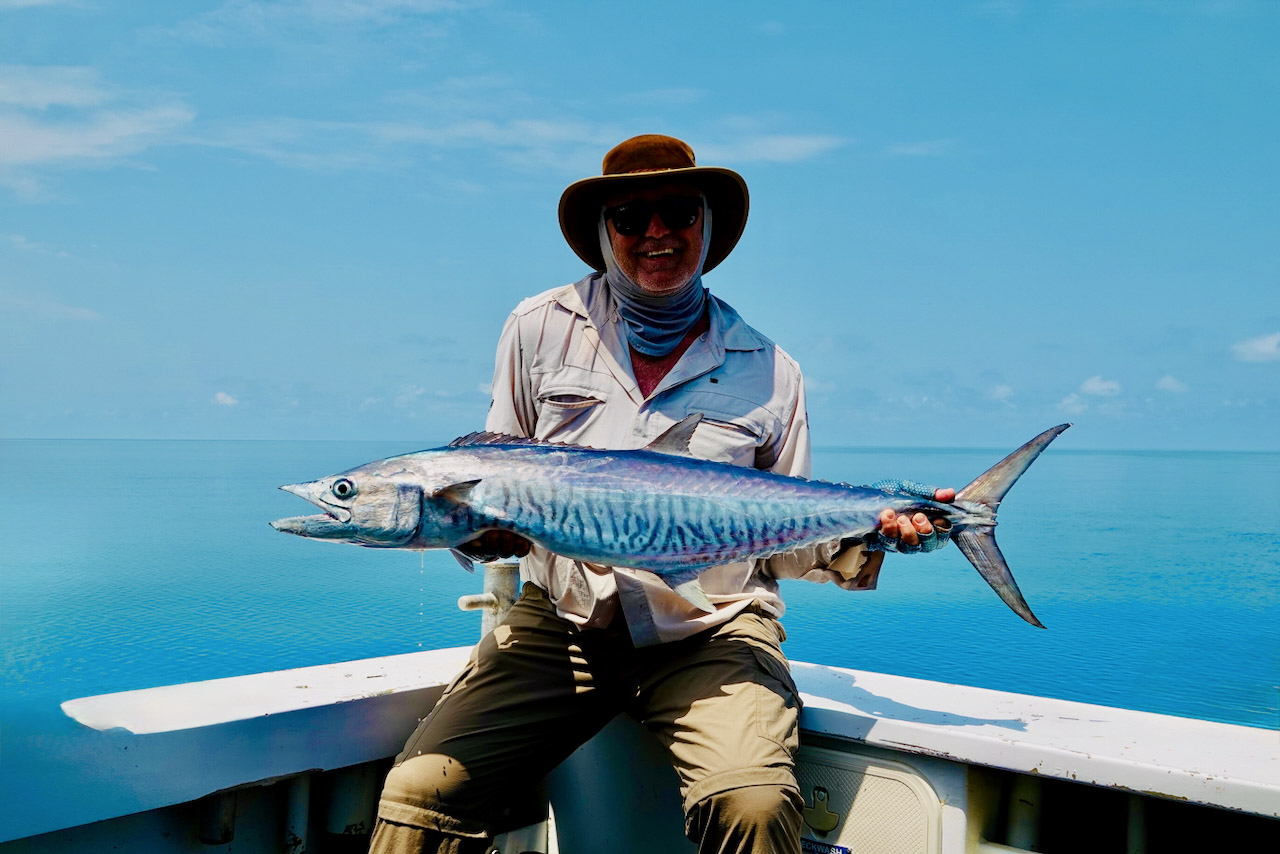
Fraser Island (K’gari) Sight Casting to Black Marlin on the Flats
Capture the essence of your tropical fly fishing adventure with these stunning moments from Northern Australia. This album showcases the diverse species, breathtaking landscapes, and thrilling action you can expect on your trip. The team at FishingEarth can help arrange your dream trip to these incredible locations. For more information, please call +61418 777 772 or email fish@fishingearth.com
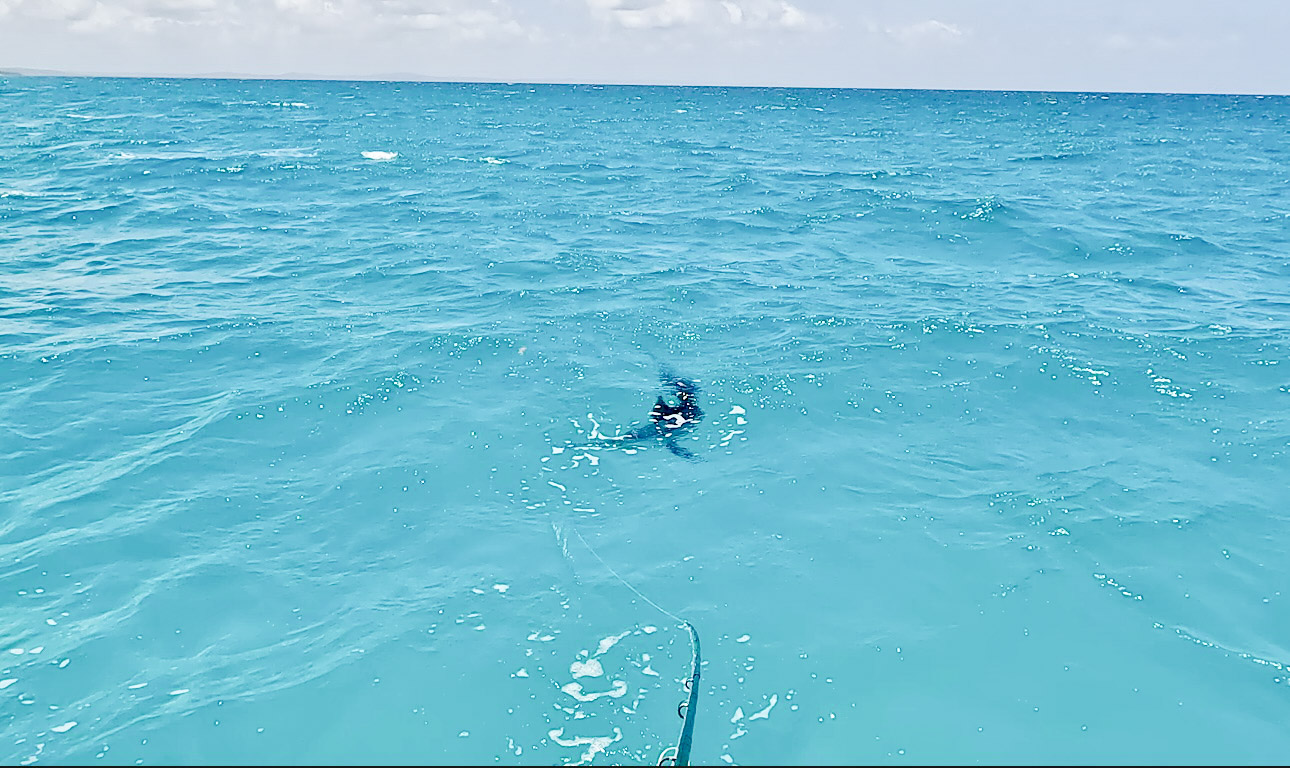
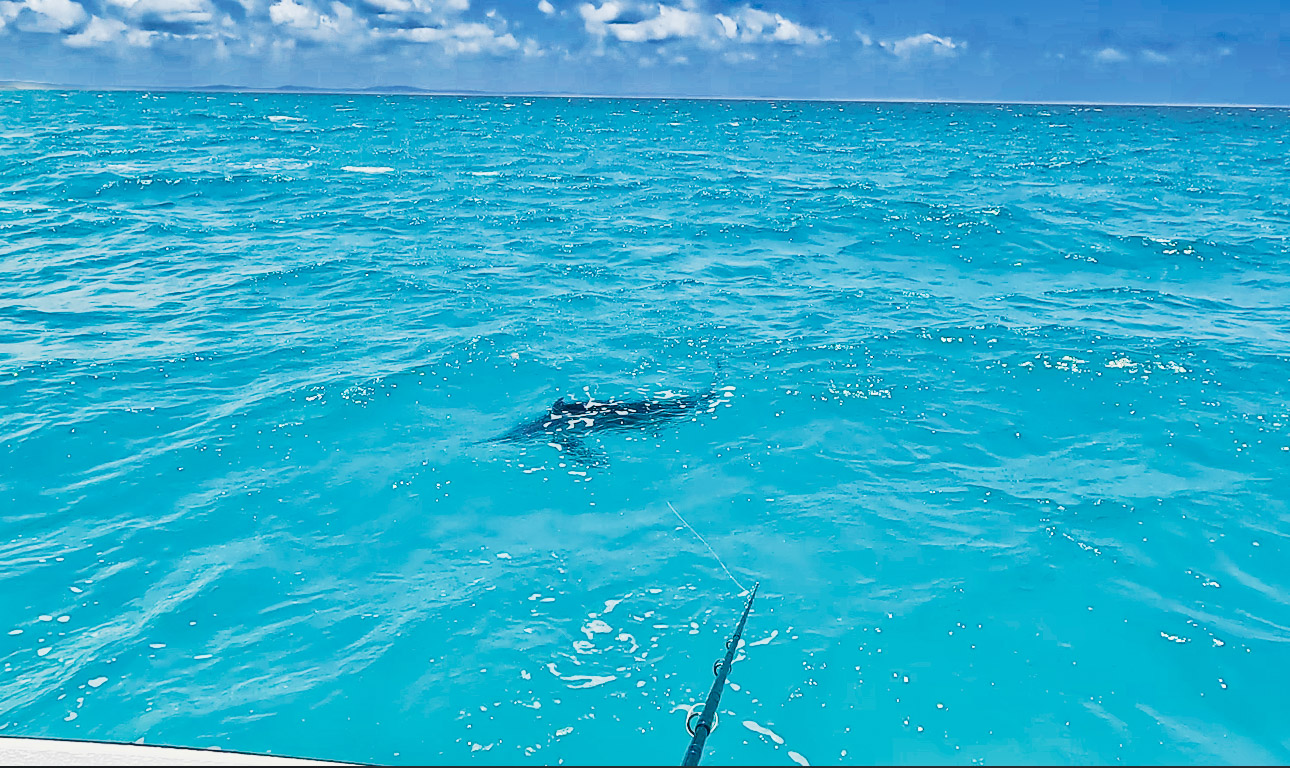
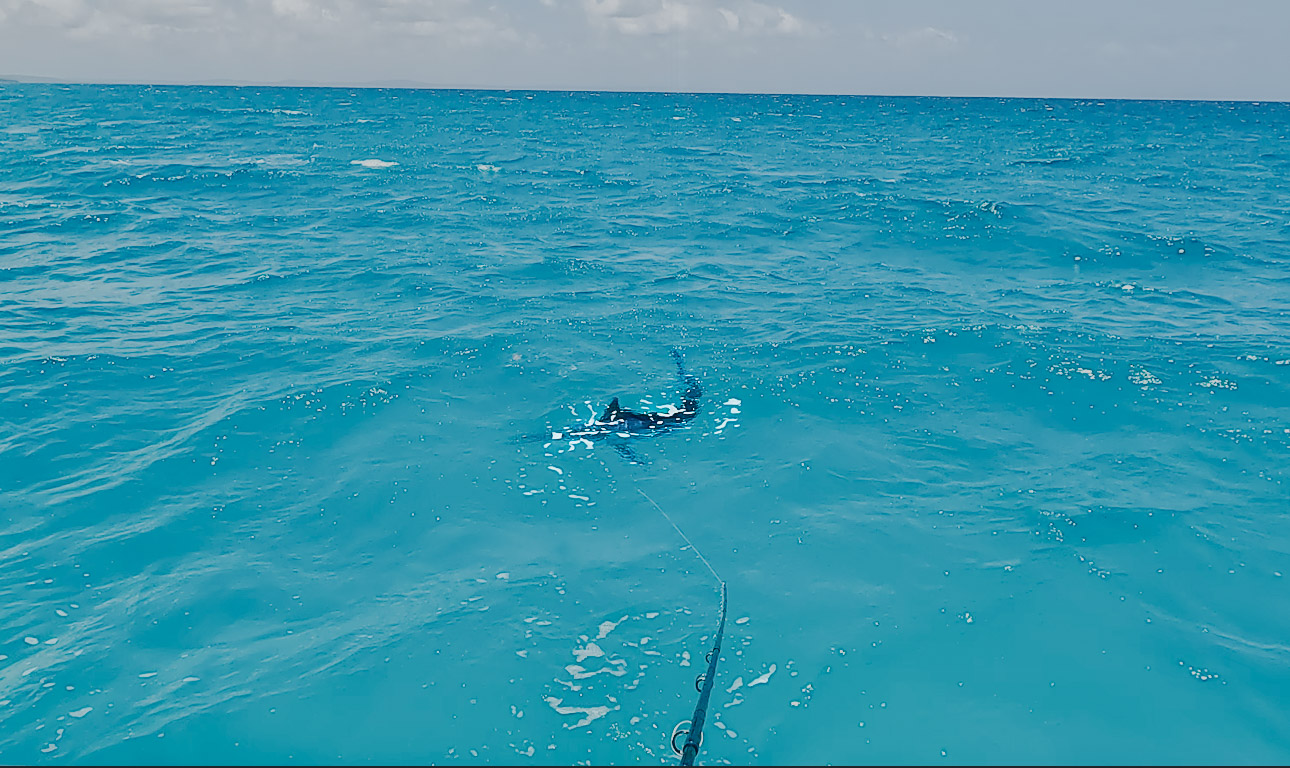
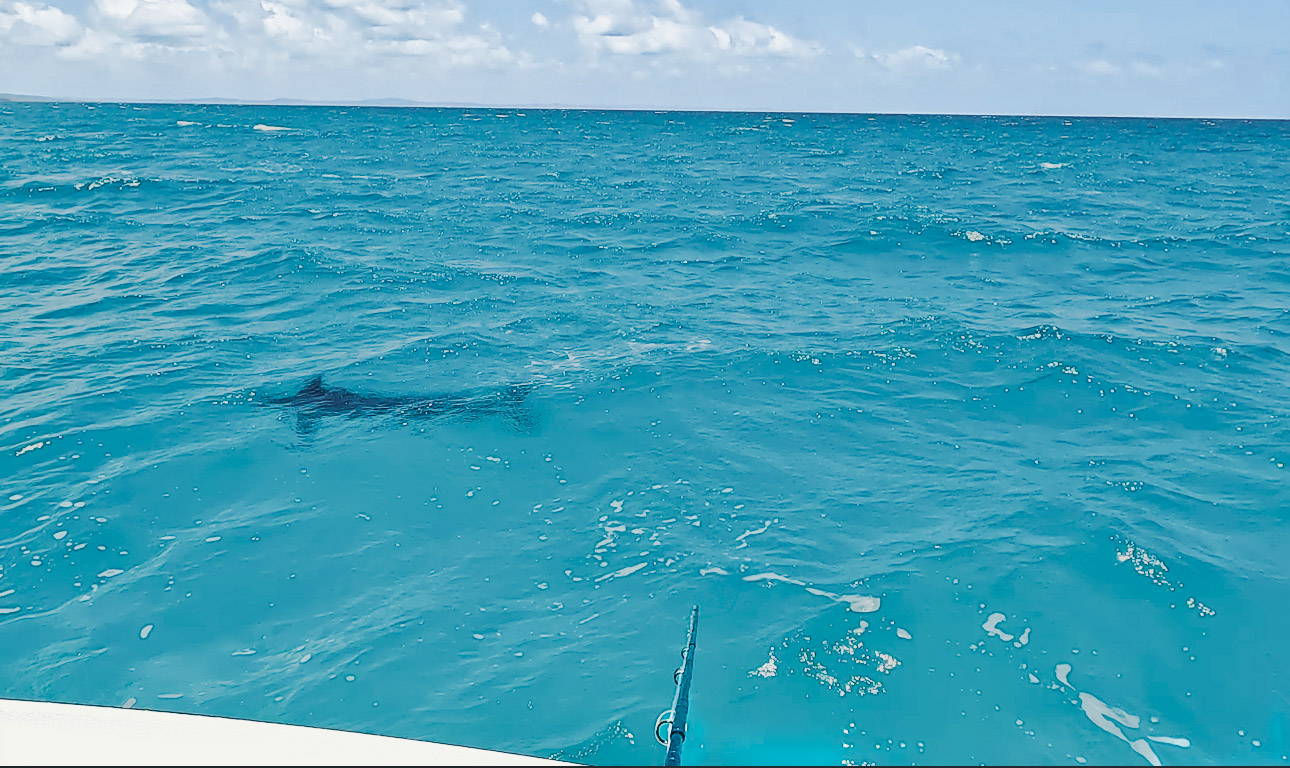

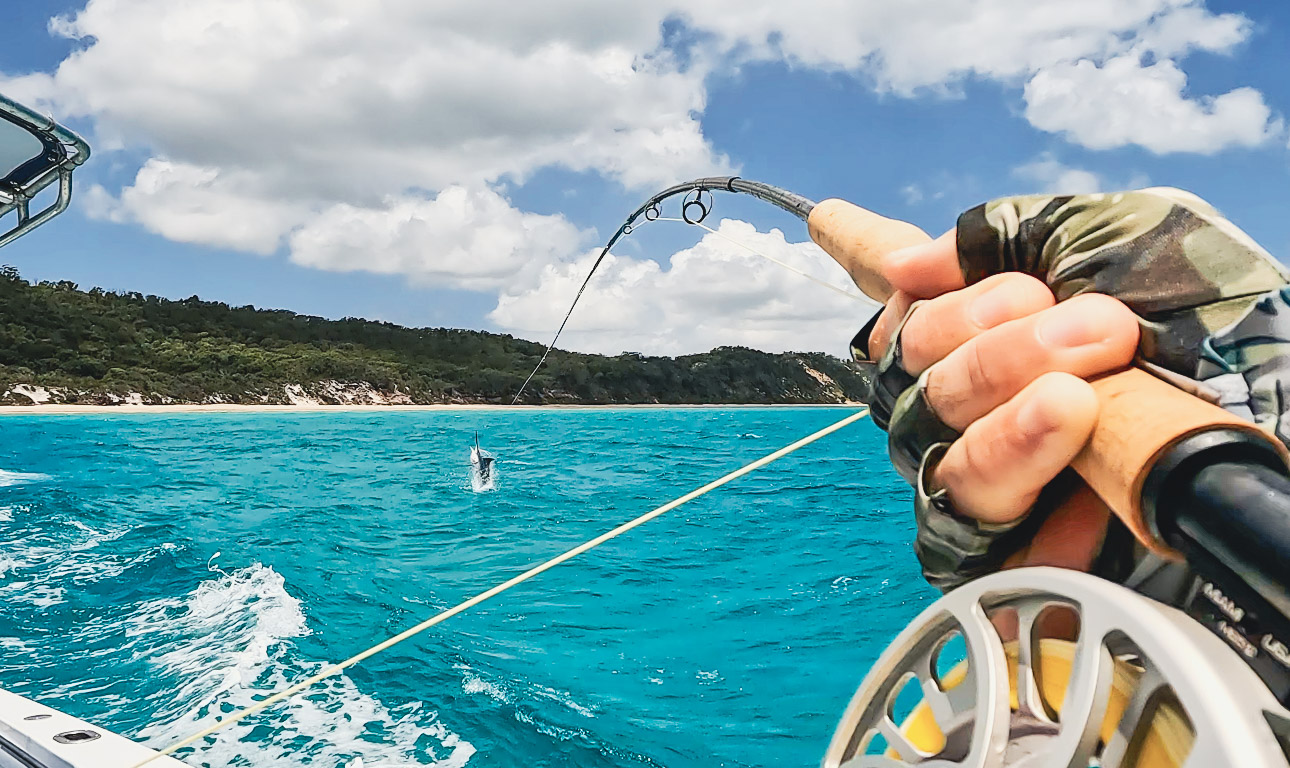
FishingEarth: Over 20 Years of Excellence in Australian Fishing Adventures!
We pride ourselves on getting the little things right, ensuring every detail of your trip is meticulously planned for an unforgettable experience. Our extensive network includes Australia’s best guides and fishing charter businesses, offering you the largest range of options for your dream fishing expedition.
Ready to cast your line? Contact us today!
By following this comprehensive guide, you’re equipped with both the knowledge and the gear for an epic tropical fly fishing adventure. We’ve combined deep research with firsthand experience to ensure no detail is overlooked. From the design of a crab fly to the reason for a 100lb shock tippet, every recommendation above is made to maximise your success and enjoyment on the water. Most importantly, these suggestions are unbiased and field proven – we recommend only what we personally use and trust, with zero commercial strings attached for fly fishing in Australia.
Northern Australia truly is a world class fly fishing destination – arguably the #1 location on the planet for the saltwater fly enthusiast seeking variety, trophy fish, and unpressured waters. Where else can you cast to a fish literally named Blue Bastard, chase a permit species found almost nowhere else, and battle giant trevally around coral reefs – all in the same week? As one international angler put it, Australia “stands alone” in its uniqueness. The ecosystems here have evolved in isolation, producing spectacular gamefish and wild settings that will imprint in your memory forever.
So pack your gear, tie up those special flies, and head Down Under with confidence. You now sound like an expert because you’ve done the homework – you understand why an Alphlexo Crab outperforms, why a GT rod needs backbone, and even why your sunglasses lens colour matters. On the flats and reefs of Northern Australia, that depth of preparation will translate into more hookups and an all around richer experience for tropical fly fishing in Australia.
Tight lines, safe travels, and enjoy every moment of your tropical fly fishing expedition. We’re sure you’ll come back with incredible stories – and hopefully pictures of a few dream fish – from this ultimate angling adventure. Good luck out there, and welcome to the ranks of the truly addicted saltwater fly fishers! For any further questions or to book your trip, please contact us at +61418 777 772 or fish@fishingearth.com

